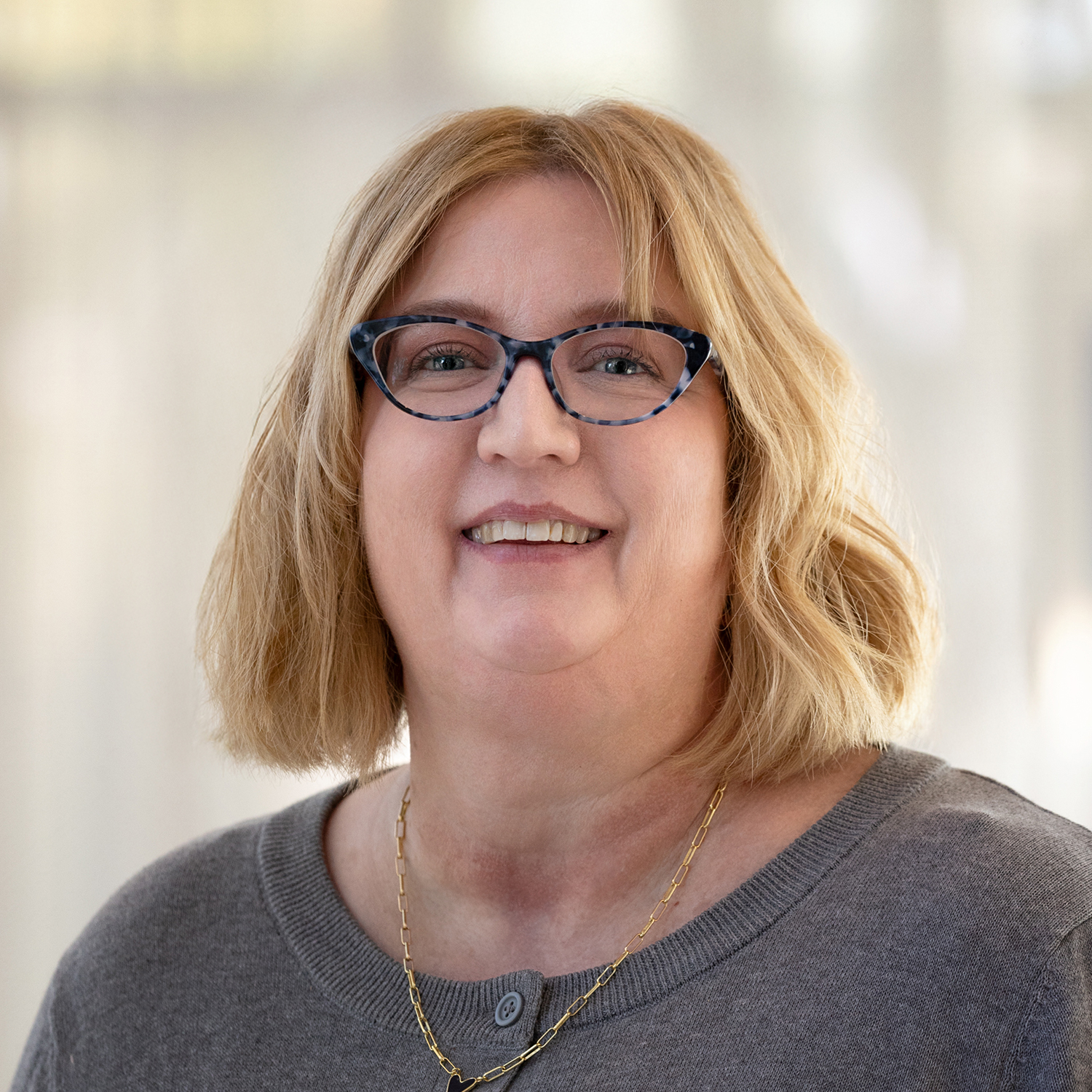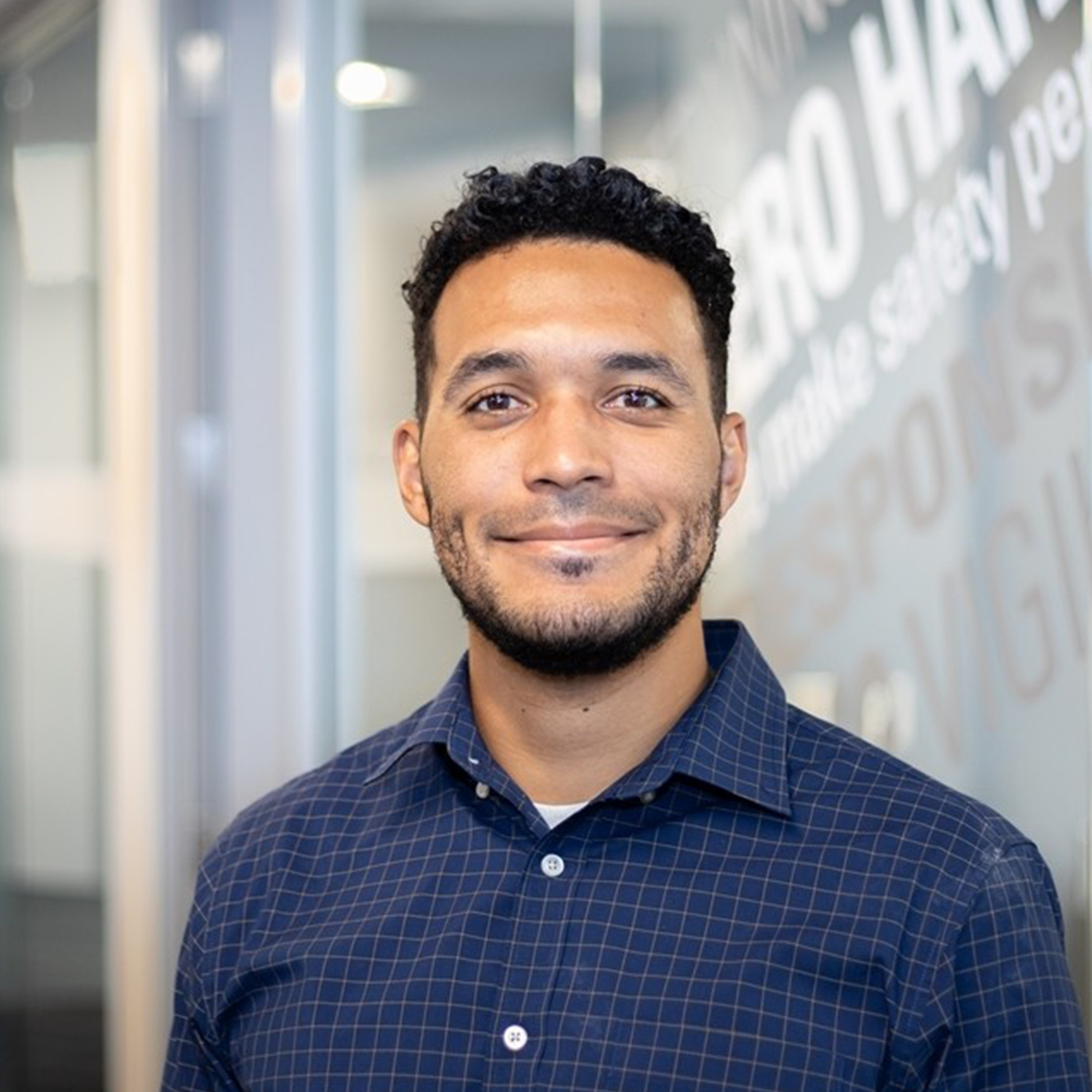Relentless Pursuit
of Excellence
Our people bring the passion, drive and ingenuity to make great things happen for our clients, communities and industry.
Meet Our Relentless Allies
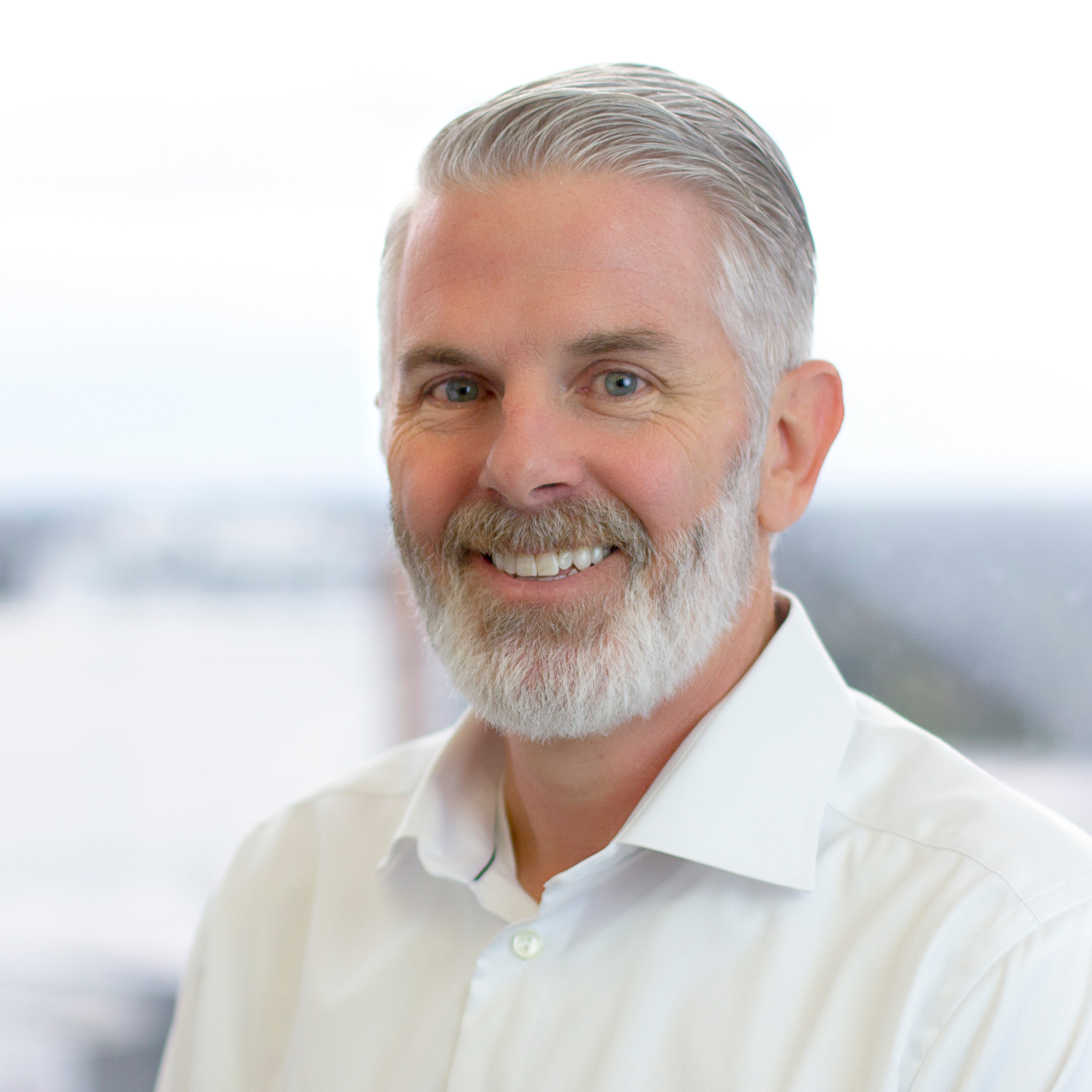
Neal Ernest
Relentless Ally
Leading With Empowerment and Accountability
For Florida Vice President of Operations Neal Ernest, construction was the family business. Having grown up watching his father work in contracting, Neal’s joining the industry was something of a destiny and family legacy, and a path he pursued with dedication.
In his 27 years in the industry since, all with Balfour Beatty and rising from assistant superintendent all the way to his current leadership position, Neal has left an indelible mark on some of our most recognizable and landmark projects like the Broward County Convention Center and multiple landmark hotels and hospitality spaces. Across Florida and even in Texas, Neal’s project and operations leadership has led to success after success, creating day-to-day project environments where our teams, trade partners and stakeholders are empowered to make informed and confident decisions.
As Balfour Beatty builds on our decades-long record of success in Central Florida, Neal’s leadership ensures that our clients in every market – hospitality, entertainment, special projects, higher education and more – know they have a trusted ally in the entire Balfour Beatty team.
It’s a Family Business
Neal’s early exposure to construction was all from watching his father—hammers-in-hand and dogged field work—but his education at the University of Florida Rinker School of Construction Science prepared him for an advanced project management track.
But Neal couldn’t let go of his hands-on roots that easily.
“I planned to graduate, spend some years in the field and then get back into project management. But all throughout school, I spent my summers wearing a toolbelt, running carpentry crews while my classmates took internships,” Neal recalls. “After a week of my first job with Balfour Beatty, I knew I wanted to be the general superintendent running big work.”
And run big work he certainly did. In the decades following, he would go on to provide exceptional client service and precision field management on monumental projects such as the Orlando Magic's AdventHealth Training Center, the Lake Nona Wave Center Hotel, the Gaylord Texan, the Loews Sapphire Falls Resort at Universal Orlando, the Cabana Bay Beach Resort and countless other projects for our most prestigious hospitality and entertainment clients in Orlando.
 The Cabana Bay Beach Resort at Universal Orlando
The Cabana Bay Beach Resort at Universal Orlando
At every step, Neal says he was surrounded by leaders who provided him with three keys to success and strategies he still implements to help project teams accomplish great things: opportunity, empowerment and accountability. Those leaders recognized Neal’s dual-threat talents as a field leader and strategic business visionary and gave him every opportunity to take on new challenges, gracefully correct mistakes and learn how to be the best possible client advocate.
Taking on Big Projects
Those opportunities to step out and lead through challenging situations started right away. On Neal’s very first project as an assistant superintendent – a landmark hospitality project that is all but a household name – he was invited to step up when the lead superintendent required emergency surgery just months before substantial completion.

“All of a sudden, I became an area superintendent. I’m sitting in all the owner’s meetings, and I was still young enough to think I could easily handle it,” Neal recalls. “It was a highly complex job on an incredibly accelerated schedule, but we successfully completed a project with thousands of workers, 24/7 operations and world-class finishes, theming and quality control.”
With a clear knack for mega project management and a talent for hospitality in particular, Neal later joined the team for the ambitious Gaylord Texan Hotel and Resort in the Dallas, Texas suburbs. When the project was put on temporary hold following the events of September 11, 2001, Neal was again able to step up and develop his project expertise and client advocacy under the tutelage of several of our strongest Texas leaders and hospitality experts like Michael Hite and Chad Brewer.
 The Gaylord Texan, one of Neal's first opportunities to learn every square foot of a mega hospitality project
The Gaylord Texan, one of Neal's first opportunities to learn every square foot of a mega hospitality project
“With the project on hold for 10 months, I took on a quasi-preconstruction role preparing for it to restart,” Neal says. “By the time it did, I knew every bit of that 2.8-million-square-foot complex and can proudly say we helped create a successful job through value engineering, schedule accelerations and proactive procurement even in a tumultuous market.”
Leading With Lean
Neal’s operations expertise also includes an extensive background in lean construction principles and a proven track record of lean successes, including early involvement with the Lean Construction Institute (LCI). While lean, as Neal sees it, seeks to address some of the inherent inefficiencies in the construction process and general contracting model, he believes its greatest potential for industry change stems from increased collaboration.
“From my involvement with LCI and lean experience on our many projects, I’ve experienced firsthand the power of getting more people involved in project decision-making,” Neal says. “More involvement at all levels paradoxically creates more efficient projects than top-down directives, but making it work requires first-rate communication, a collaborative spirit and the leadership skills to educate and empower your staff, partners and stakeholders.”
Of course, where the lean rubber meets the project challenge road can become exceptionally complex. Even so, the principles by which Neal has always led his projects still apply: set clear and immovable goals, give your teammates and clients the tools to succeed and hold every party accountable for success. “Communication” is less an element of the formula and more the substrate in which it exists, undergirding and enhancing every step of the project.

On Phase II of the Broward County Convention Center and Hotel mega project, for example, unforeseen design challenges with 160-foot structural steel trusses created a complex challenge for our team and trade partners. After disassembling some six weeks’ worth of steel work, the team had to recover—and quickly.
“Once you identify a problem or potential problem, you first have to communicate to the team that there is a problem, collaborate on a solution and continue to hold the team accountable through implementation,” Neal says. “On BCCCH, we knew our next milestone date was permanent power. Missing that date was not an option.”
Through aggressive and intentional collaboration between our team, our steel trade partner and design partners, Neal and the BCCCH project team carved a clear pathway to success. Schedules were greatly accelerated, site logistics became even more complex, but the collaborative effort paid off as the team brought the project back on track.

Loews Sapphire Falls Resort at Universal Studios in Orlando, Florida
“On every project large or small, empowerment and accountability are just two sides of the same coin. The one cannot exist without the other,” Neal says. “These are foundational principles that leaders once instilled in me and that I now pass on to all of our teammates – stand in the gaps for our people and our clients, learn from mistakes and commit to a people-first, collaborative and communicative approach that always creates success.”
Looking Ahead
As Balfour Beatty looks ahead to extending our Central Florida legacy, building on the success of projects like Manor West River in Tampa and now new opportunities at the University of Florida, operational leaders like Neal prove the strength of our relationship-driven business.
Balfour Beatty’s greater Florida portfolio is dominated by repeat business for precisely this reason: after just one project, clients come to understand that Balfour Beatty’s leaders like Neal don’t make unilateral, top-down decisions and pass the consequences on to clients. Instead, they create inclusive and rewarding environments where every stakeholder is equally empowered to share our clients’ values, equally empowered to implement creative and lean solutions and equally empowered to create success.
Read More
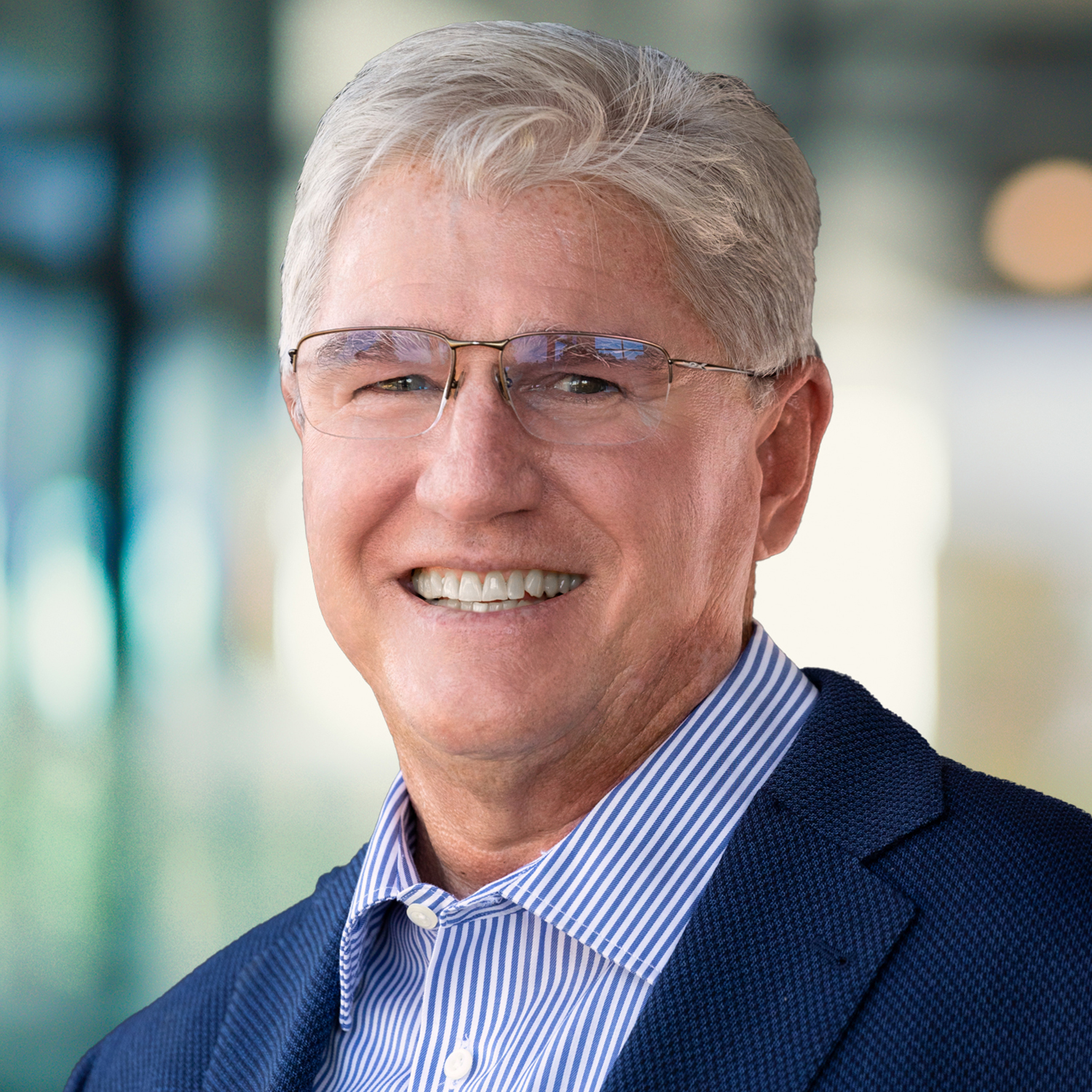
Tom Murray
Relentless Ally
A Client’s Best Kept Secret
Tom Murray has never encountered infrastructure he doesn’t like to build.
And he would know. With over 40 years of industry experience, Tom has seen and built it all. From underground fuel tanks to groundwater extraction systems, fiber optic duct banks, pump stations, water treatment plants and much more, Tom’s expertise and industry roots quite literally run deep. Today, as director of operations for Balfour Beatty, Tom leverages the diverse skillsets he has cultivated working on the many different facets of infrastructure that connect and power our communities.
Dedicated, decisive and dependable, Tom is widely esteemed as a builder of choice for Balfour Beatty’s preeminent infrastructure clients like the East Valley Water District in San Bernardino, California. But he didn’t earn that title overnight, having risen through the ranks the old-fashioned way—through the trades.
Tom’s humble beginnings as a masonry laborer soon beget greater estimating, project management, business development and even entrepreneurial opportunities as his career progressed. No matter the project type, Tom’s passion for infrastructure construction remained his guiding force and driving inspiration.
“I like to build stuff for people, I like to figure things out,” explains Tom, who can even be found on family vacations inspecting local water systems, enhancing his already encyclopedic knowledge of infrastructure. Indeed, Tom’s fascination with infrastructure never takes a day off.
The Stars Align in San Bernardino
As luck or perhaps destiny would have it, Tom was introduced to the East Valley Water District while working on a plant upgrade project with another contractor. Tom left a distinct impression on the client, and the client on Tom. After joining Balfour Beatty a few short years later in 2014, Tom was reunited with the East Valley Water District on what would become a signature, career-defining project for all stakeholders: the progressive design-build Sterling Natural Resource Center (SNRC).
The owner began the project with the intention of planning, designing, constructing and operating the water treatment plant to a standard-setting level of excellence. Tom’s leadership and vision were instrumental in realizing that goal at every stage of project delivery. Together, design-build manager Balfour Beatty, lead designer and engineer-of-record Arcadis and architect-of-record Ruhnau Clark Architects (collectively “Team Sterling”), delivered the net-zero project on time, on budget and with zero claims or litigation—a feat nearly unheard of in infrastructure construction.
An Infrastructure Icon
These achievements are even more impressive considering the challenges that arose during the five-year project. From a global pandemic and resulting supply chain shocks to a mega, $33 million change order executed at 60-80% design completion that upended the schedule, procurement, site design and major utilities, SNRC was a one-of-a-kind project for a one-of-a-kind team. In a testament to the power of Zero Harm, Team Sterling also navigated a gubernatorial stay-at-home order and distancing mandates while logging 800,745 total hours worked with only one lost-time incident.
Although any one of these challenges alone could have easily derailed the project, Team Sterling’s ultimate success was no surprise to Tom, who says they cultivated a strong foundation from the start through their formalized partnering process that culminated in a team Charter.
“I think trust is the biggest thing,” affirms Tom. “Developing trust amongst yourselves and having respect for one another are the best things you can do for a project to be successful.”
Today, SNRC stands as a living landmark to the realization of the East Valley Water District’s aspiration, a beacon of meaning and purpose for the local community and a signal to architecture, engineering and construction industry that the success of our work hinges not just on technical prowess but on the strength of partnerships forged. Having won over 20 industry awards to date, SNRC is one of the most highly decorated projects in Balfour Beatty history. It is also a project that echoes of Tom’s unwavering, Relentless Ally commitment to the clients and communities in his care.
“Tom’s leadership was instrumental in the construction of the Sterling Natural Resource Center. He embraced the District’s vision to make every source a resource and helped turn that dream into reality,” says Michael Moore P.E., general manager/CEO East Valley Water District. “Today, the facility is fully operational, recycling millions of gallons of water each day and generating clean energy, creating an award-winning, net-zero facility.”
A Tried-and-True Collaborator
AT SNRC and on his most recent project, the $60 million Bassett High School Stormwater Capture in La Puente, California, Tom leads our operations teams by example, modeling what it means live out Balfour Beatty’s Relentless Ally mindsets. In fact, Tom is usually the first one in the door and often the last one out. He wouldn’t have it any other way, because he takes pride in exemplifying the work ethic and commitment his parents instilled in him.
One of the reasons Tom has been an ardent proponent of collaborative contracting models is the relational foundation they cultivate that reaps decision-making efficiencies and a more enjoyable building experience for everyone. Tom’s experiences led him to pursue a formal certification through the Design-Build Institute of America (DBIA) in 2017.
“Traditional bid-build work is always a fight,” reflects Tom. “I enjoy the process of coming together as a team under a common goal. You can disagree, but the client’s end goal and making it the best it can be is the ultimate prize that everyone is working towards.”
Although Tom has four decades under his toolbelt, he’s still excited to learn new aspects of the industry, especially as it relates to sustainability which is a core tenet of Balfour Beatty’s global build to last strategy.
“When I look back over my career, I didn’t really put it together, but water resources, environmental cleanup – it’s all sustainability,” reflects Tom. “I think if there’s one thing I’m most proud of, it’s the resources I have created through building for my neighbors.”
As Tom Murray has built infrastructure icons, he has become something of an infrastructure icon himself, evolving with the needs of his communities as both a steward and trailblazer for the systems that underpin our wellbeing, opportunity and prosperity.
Read More

Ernesto Jaimes-Aguilar
Relentless Ally
A Passion for Safety
Managing safety on a major infrastructure project takes a special kind of person. One who isn’t just well-versed in policies and procedures, but someone passionate about getting people home safely.
Ernesto Jaimes-Aguilar perfectly exemplifies that passion in his role as project safety supervisor at the new Lady Bird Lake project in Austin, Texas. For Ernesto, our Zero Harm culture isn’t just about traffic cones and neon vests—it’s about living out his purpose.
“I think my purpose is helping other people, and making sure everyone gets home safely is the way I do that,” Ernesto says. “I get to help the workers, but I also help their families and friends, as well as the company.”
The Lady Bird Lake project is still in early stages but will ultimately include rebuilding a 2.5-mile section of Interstate 35 (I-35) on the south side of downtown Austin. As he works to build a safety culture on this new venture, Ernesto is prioritizing training, communication and strong relationships to set the foundation for a safe and successful project.
Safe Beginnings
Preparing a project like Lady Bird Lake is a complicated process, with safety being considered every step of the way. Many teammates and partners on the project are transferring from Oak Hill Parkway, another major infrastructure project located in the Austin area.
Despite having worked with these individuals before, Ernesto is far from complacent. Training has been top of mind for him since breaking ground on the project, ensuring that everyone who steps onto the jobsite is making safety their number one priority.
“Training is a non-negotiable, whether a teammate is fresh off another one of our projects or not,” he explains. “We want to make sure that our Zero Harm culture, our procedures and our jobsite rules are fresh in their minds.”
This training also serves another purpose: allowing Ernesto to spend time with each and every member of the team. Though he has an established rapport with many from working on the Oak Hill Parkway project, strengthening those relationships is extremely important to Ernesto in establishing a culture of safety.
“Building a friendship as well as a working relationship establishes a level of trust,” he explains. “Everyone knows they can come to me with concerns or ideas and trust that I will provide for them and make sure they have everything they need to get the job done safely.”
Safey Amid High Traffic
Another consideration of getting the Lady Bird Lake project up and running is the proximity to live traffic. Earlier this year, Balfour Beatty announced a groundbreaking safety initiative expanding OSHA’s long-established Fatal Four to include the fifth fatal risk of Live Traffic. The Federal Highway Administration estimates there are more than 100,000 vehicle crashes in work zones each year, making vehicle traffic a significant threat, especially on a project like Lady Bird Lake.
The jobsite is located in the heart of downtown Austin, along the Colorado River just south of the Texas state capital. An estimated 200,000 drivers use this segment of I-35 daily, and Ernesto is committed to getting every one of them through the jobsite without incident.
“Working in live traffic is one of the most dangerous jobs there is,” he says. “There are all types of drivers out there—some are distracted, others are speeding, others may just be confused because of a traffic switch. It’s vital that we have every precaution in place on our jobsite to get everyone home safely.”
One such precaution includes small, portable lights on workers’ personal protective equipment (PPE). These lights, manufactured by Guardian Angel, are equipped with high-powered LEDs on all sides, enabling drivers to see workers from as far away as five miles. Innovative technologies like these are growing more common on jobsites across the U.S., and making great strides in safety.
In addition to outfitting crews beyond the standard PPE, Ernesto also trains every member of the team to always remain alert on the jobsite.
“We prepare our jobsite and our crews as much as we possibly can, but we also have to be prepared for the unexpected,” Ernesto explains. “The training we provide is crucial, as well as the relationships we’ve built, which remind us to look out for each other.”
Breaking Down Communication Barriers
These strong relationships keep the lines of communication open, something that is vitally important to maintain a safe jobsite according to Ernesto.
“There’s the saying that you’re either falling together, or you’re falling apart,” he says. “When teams don’t communicate, they won’t be on the same page about the operations of the day, and something could get missed or overlooked. That’s how things fall apart.”
Maintaining communication isn’t always as simple as making sure teams are speaking to each other. There are logistical barriers that Ernesto is passionate about overcoming.
One such barrier is that of language. Ernesto is fluent in both English and Spanish, allowing for better communication with many members of the team.
“For many of our teammates, English is not their first language. Communicating exclusively in English can lead to misunderstandings on the jobsite,” he says. “When any member of our team doesn’t understand exactly what’s being asked of them, that presents a safety concern.”
There are also logistical barriers to communication due to the nature of jobsites. A member of the night crew at Lady Bird Lake identified one such barrier: noise.
The team working overnight on the project is often operating alongside trucks that are bringing in or hauling off materials. These trucks make it difficult for members of the team to get each other’s attention, forcing them to shout at each other in a way that was often ineffective. The crew approached Ernesto with an easy solution.
“They suggested outfitting the crew with air horns to make it easy to get each other’s attention,” he says. “It’s a simple, inexpensive solution that will make their jobs safer and easier and I’m grateful that my teammates trust me enough to come to me with feedback, especially when it makes the jobsite safer for everyone.”
Called to Safety
As Lady Bird Lake continues to take shape in the heart of Austin, Ernesto’s approach to Zero Harm serves as a powerful reminder that protecting our teammates goes beyond compliance and checklists. By prioritizing meaningful connections, fostering open communication and remaining receptive to his team’s innovative safety solutions, Ernesto has established a culture where everyone feels valued, heard and empowered to speak up.
In an industry where the stakes are literally life and death, Ernesto’s dedication stands as an example of how genuine care for people transforms safety from a responsibility into a calling.
Read More
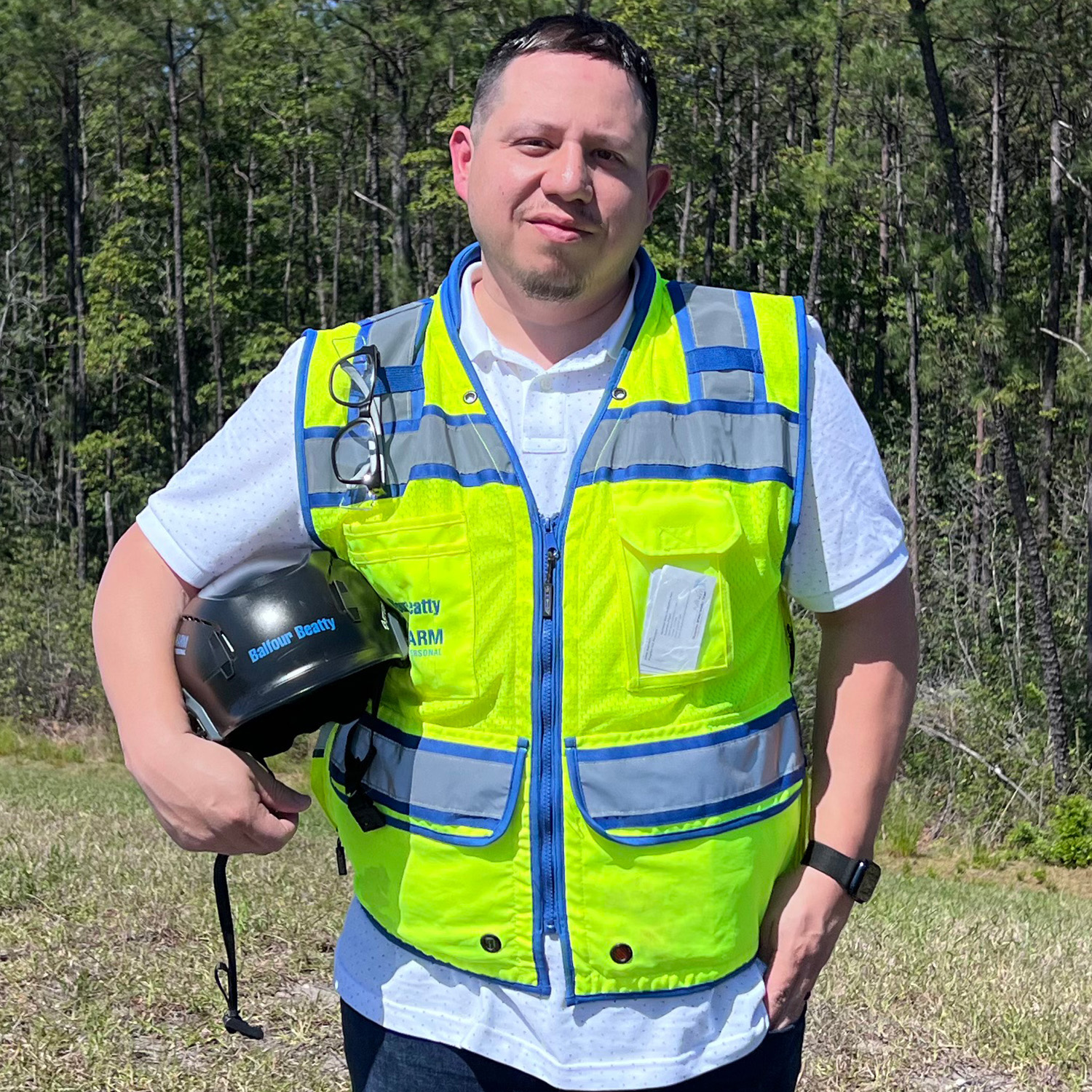
Alex Ramos
Relentless Ally
Striving for Safety
When thinking of construction safety, images of hard hats, protective glasses and neon vests come to mind. But safety encompasses so much more than personal protective equipment—every choice counts, and a split-second decision on a jobsite can change a life forever.
Alex Ramos, a safety, environmental and health manager for our civils operations in the Southeast, is passionate about making safety personal, constantly seeking to enhance his safety expertise and ensuring that all of his teammates, when faced with difficult decisions, are equipped to make the right choices.
Managing Across Miles
Balfour Beatty’s industry-leading commitment to safety was the primary factor that drew Alex to pursue a career with Balfour Beatty. Before joining our team, he worked for a safety consulting firm, but Balfour Beatty’s steadfast dedication to Zero Harm stood out from the pack and led him to join the business in 2017.
Today, Alex travels throughout the Southeast conducting safety audits, offering safety management guidance and providing ongoing training for our teammates and trade partners. Whether he is at our Harkers Island Bridge Replacement project in Harkers Island, North Carolina, the Effingham Parkway project in Rincon, Georgia, or any of the large-scale infrastructure projects on which he oversees safety, Alex can always be found with his sleeves rolled up, working tirelessly to ensure our teams and surrounding communities stay safe.
On any given day, Alex is responsible for managing safety across 10 or more jobsites in multiple states. Unlike a high-rise development in which workers remain within a relatively small geographic radius, crews on civil infrastructure projects are often spread out across many miles. This might make the task of managing safety daunting to some, but Alex has honed his training and audit practices to ensure no safety issue is overlooked. Many of Balfour Beatty’s safety requirements exceed those of the Occupational Health and Safety Administration (OSHA), and Alex believes in his teammates’ leadership to maintain safe jobsites.
“Safety is more than just an aspect of what we do, it’s deeply woven into the culture at Balfour Beatty,” says Alex. “When it comes to keeping our jobsites safe, the key is teamwork. Just as it takes a team to complete a construction project, it takes a team to make sure each and every person on our jobsite and in the surrounding community stays safe.”
Alex is a firm believer that communication is the foundation to safety. Although Alex regularly visits the jobsites he manages, he can’t be everywhere at once. Because of this, he relies heavily on personal touchpoints with his teammates. Alex ensures that everyone on-site is empowered to contact him with questions or concerns but also trusts project engineers, project managers, superintendents and forepeople to effectively monitor safety.
While it is easy to get caught up in the minutiae of day-to-day operations, Alex encourages his teammates to regularly step back and look at the bigger picture of safety. Through a three-question call-and-response at the beginning of every meeting, Alex helps keep his teammates focused on safety fundamentals.
Question: Whose job is safety?
Answer: Mine.
Question: Are you committed to “Zero Harm”?
Answer: Yes.
Question: Who has the authority to stop work because of a safety concern?
Answer: I do.
“Keeping those three questions at the forefront of everyone’s mind ensures that we are all on the same page,” says Alex. “Whether I am on-site or not, our teams make sure that safety is always effectively communicated.”
Making Safety Inclusive
One of the most important steps to getting on the same page is ensuring everyone on our jobsites understands safety materials. According to the National Association of Home Builders, nearly one in three construction workers identify as Hispanic/Latinx, and approximately half of construction laborers identify as Hispanic/Latinx. Translations of these essential materials allow our teams and partners to make informed, safe choices when faced with split-second decisions.
Alex, who is fluent in Spanish, has also gone above and beyond his day-to-day responsibilities by helping translate company-wide safety materials such as Toolbox Talks, training materials, jobsite signage and more. His efforts ensure we communicate with precision and accuracy to our diverse project teams and trade partners across our entire U.S. operations.
“These materials are vital to the success and safety of our projects. We can’t afford for anyone to miss this information,” Alex says. “Our teams need to be able to read and understand the information. Translating them is one way to make sure that’s possible.”
The Spanish translations of safety materials have been successful in maintaining greater cohesion and consistency for Balfour Beatty teams across the nation. Alex’s previous role as a safety consultant gave him an understanding of unique demographic and dialect needs across different regions, and he hopes to see safety materials translated into more languages in the future.
Continuing Safety Education
Alex’s passion for safety and desire to continue learning have inspired him to advance his education. Most recently, Alex earned his Associate Safety Professional (ASP) certification, a prerequisite of which was earning his associate degree in construction. The degree and certification processes were not easy; Alex studied and took classes on his own time, learning valuable lessons he brings with him each day to our jobsites.
“Ongoing safety training is crucial to our goal of achieving Zero Harm,” says Eric Yates, regional safety, environmental and health manager. “Alex’s initiative in pursuing and achieving the ASP certification demonstrates his continued commitment to improving both himself and our overall safety performance.”
Though proud to have achieved his ASP certification, Alex is far from finished. “I never dreamed I would get my degree or certification, but now that I know I can do it, why would I stop here?” He is excited to tackle his next endeavor: earning his Certified Safety Professional (CSP) certification. The first step? Completing his bachelor’s degree.
An inclusive safety leader who is continuously raising the bar in our pursuit of Zero Harm, Alex Ramos knows first-hand that choices made in a split-second can save a life. And on his watch, those choices are sure to be safe ones.
Read More

Keith Nixon
Relentless Ally
Paving a Legacy Across the Southeast
Keith Nixon doesn’t have a crystal ball to predict what’s on the horizon for mega infrastructure projects. But with 35 years of industry experience spanning the full gamut of preconstruction and operations, a track record of trusted partnerships and leading expertise in collaborative contracting models, he doesn’t need one.
As business development director for Balfour Beatty’s infrastructure operations in the Southeast, Keith channels that experience into forecasting the future—how to accurately price it, how to adequately staff it and how to effectively build it to last for his clients and communities. It’s a one-of-a-kind role that demands a unique blend of intuition, precision analysis and strategic problem solving, and no one is better suited to fill it than Keith.
Since joining Balfour Beatty in 1999, Keith has played a vital role in shaping the evolution of our infrastructure business in the Southeast. His legacy is paved into the numerous interstates, roads and bridges Balfour Beatty has delivered in the Carolinas and Georgia—projects totaling nearly $1.7 billion that continue to shape how people live, work, travel and play.
Whether he helped bring them to life in the field, behind a computer crunching thousands of numbers or in a combination of both roles, Keith’s impact on our business, industry and communities is undeniable.
A Trusted Voice in Collaborative Contracting
As Keith’s career evolved, so too have the skillsets he brings to his projects and partners. As collaborative contracting models began to take root in the public sector, Keith recognized a need to become well-versed in design-build and progressive design-build, two of the leading types of collaborative models. Like anything Keith endeavors, he set out in earnest to gain not just an understanding but a mastery. He became involved with the Design Build Institute of America (DBIA) and assumed the leadership role over Balfour Beatty’s Southeast infrastructure alternative delivery operations in 2017.
“While public clients have historically been slower to adopt collaborative models than in the vertical buildings sector, I recognized a growing appetite for their application due to faster procurement, improved risk mitigation, better cost management, early collaboration and other benefits as compared to traditional bid build,” Keith recalls.
Firsts at Fayetteville
Keith put those skills to the test as design-build manager on the I-295 Fayetteville Outer Loop project in Fayetteville, North Carolina. From the outset, the project faced significant delays due the North Carolina Map Act, which required the North Carolina Department of Transportation (NCDOT) to compensate landowners for properties included on future transportation maps. As the NCDOT addressed Map Act-related settlements and budget adjustments, the project was effectively suspended.
Compounding these issues, Hurricane Florence made landfall in September 2018, resulting in a catastrophic, 500-year flood event to the corridor connecting I-95 and Fayetteville Outer Loop. At the time, the Fayetteville Outer Loop project design was only planned to withstand a 50-year flood event. In the wake of the devastation, former North Carolina Governor Roy Cooper emphasized the importance of resilient infrastructure to the state’s rebuilding efforts.
In response, Keith partnered with the owner to proactively propose improvements bringing that segment of highway to a 100-year design standard. His initiative sparked broader conversations about the project’s untapped potential, ultimately leading to the inclusion of additional segments of I-95. Over the next 18 months, the project team successfully negotiated and integrated the expanded scope through a progressive design-build approach. The project grew from $129 million to $240 million in what became the largest change order and the first use of progressive design-build in NCDOT history.
“It was a win-win,” Keith recalls. “Balfour Beatty received critical time extension, and the owner was able to accelerate construction of I-95 by 15 years and bring it up to required standards. It was a truly collaborative effort.”
Moreover, the change order also reduced risk for both Balfour Beatty and the client. Because the change order was processed as a lump sum, it reduced our risk of incurring quantity overruns and the client’s risk of cost overruns.
Balancing Risk, Research and Reason
Balfour Beatty has gone on to procure additional collaborative contracts with NCDOT, including our largest regional project to date, U.S. 70 James City. Although Keith estimates that approximately sixty percent of infrastructure opportunities will soon be procured under collaborative models, many hard-bid and other traditional delivery opportunities still abound.
No matter what the delivery model, Keith has his eye fixed firmly five to seven years into the future, assessing every opportunity through a disciplined lens of risk tolerance, margin health and other critical decision factors that ensure Balfour Beatty achieves sustainable business growth.
While Keith bases his proposals on many known quantities, he also contends with much that is unknown. Due to market and supply chain volatility, a project priced two years ago at $100 million could easily have swelled to $200 million today. Keith’s longstanding relationships in the design and engineering communities as well as with industry associations such as the Associated General Contractors of America (AGC) empower him to better anticipate these uncertainties in an industry that is becoming ever-more dynamic by the day.
Keith’s precision proposals are a powerful advantage in procuring work across every delivery type, but he is quick to credit Balfour Beatty’s integrated capabilities as the driver of success in his final bid numbers.
“You win with shorter schedules. You get shorter schedules by understanding the scope of work better than the competition, maintaining stronger relationships with the subcontractors who have solid production histories and then pricing the job correctly,” affirms Keith. “It’s about having the right leaders on the ground with the right blend of skills.”
An Architect of Change
A respected visionary within Balfour Beatty and the construction industry at large, Keith Nixon is an architect of change and an advocate for progress. His career – and the projects he has touched – are a testament to value of cultivating diverse skillsets, establishing trusted partnerships and leading with clarity and consistency.
Read More
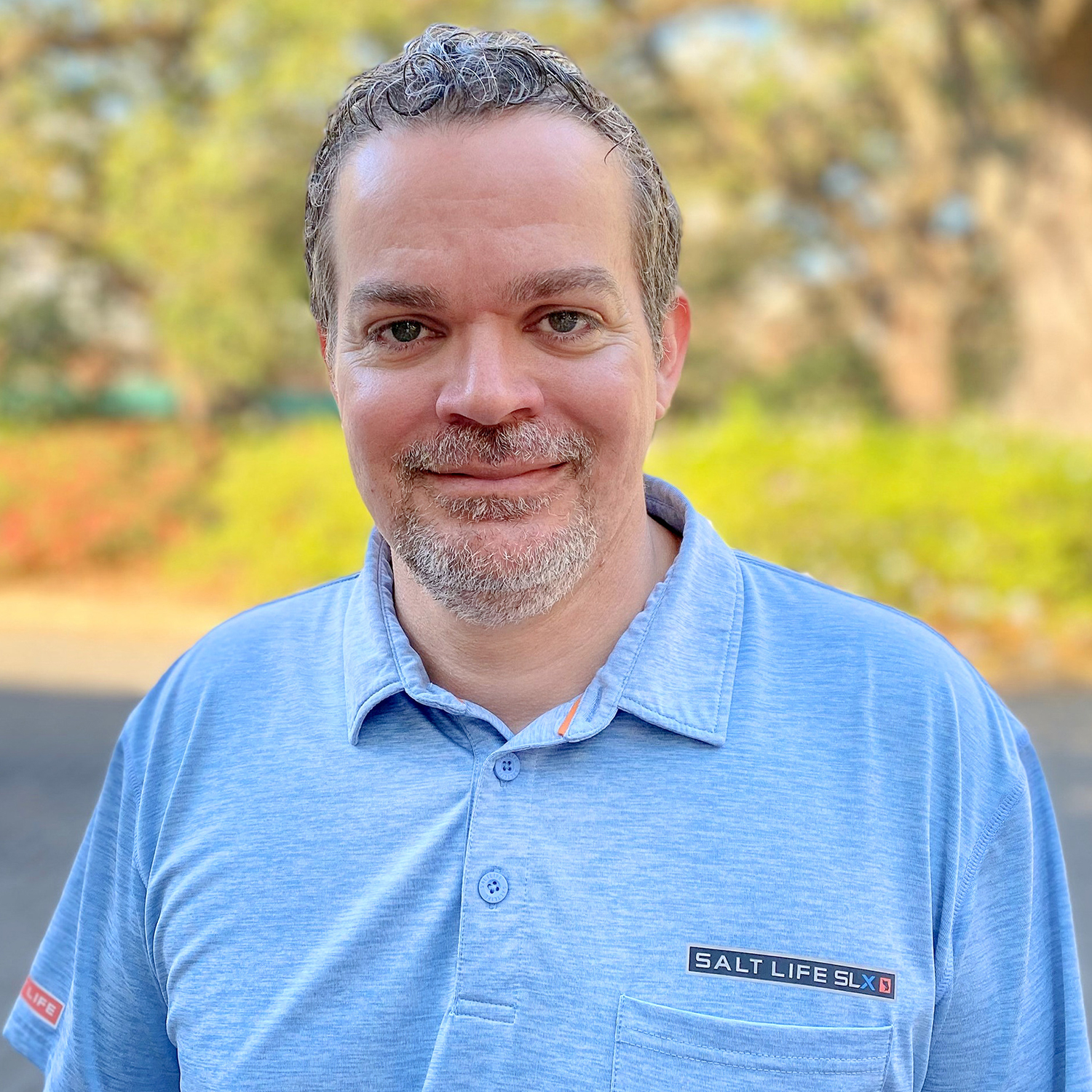
Jason Michaud
Relentless Ally
Savannah’s Superintendent
Senior Superintendent Jason Michaud never expected to end up in construction. If anything, his pivot from retail management to project management seems, at least on the surface, a complete about-face.
Jason’s decade of retail management experience was actually preparing him all along, instilling in him an innate sense of people-centered service and relationships as a foundation for project success. In Balfour Beatty, he found a leadership and behavioral framework that already valued the same qualities and empowered leaders like him to grow, develop and serve clients with unwavering dedication
In his 11-year construction career since, Jason has become one of Balfour Beatty’s top builders in the Savannah, Georgia metropolitan area, cementing his status as a Relentless Ally for our clients and partners. Across diverse market sectors, from elementary schools to municipal facilities to landmark hotels, clients have come to know Jason and Balfour Beatty as culture-setters – where everyone is empowered to pursue excellence, serve clients well and create the safest possible jobsites.
Starting in Safety
Jason first encountered Balfour Beatty’s operations while he worked as a temporary laborer on the sprawling Buckhead Atlanta family of projects, a mixed-use development district where our teams have maintained a near-constant presence as a construction partner since its 2005 inception.
Jason initially reported to a former safety, health and environment (SE) director and Brian Whetstone, now a senior superintendent on the LAX Automated People Mover project in California. Brian and other leaders took note of Jason’s enthusiasm for construction (a fact that surprised him as much as anyone) and soon brought him onto the team as a safety-focused understudy. Just a foot into the construction door, to be sure, but one that proved formative.
“I spent those four years working in safety asking constant questions, growing in my understanding of construction management, safety principles and the day-to-day responsibilities of project superintendents,” Jason recalls. “Eventually, I was acting enough like a superintendent that I set on the path to becoming one.”
In the years since, rising from assistant to now senior superintendent, Jason’s SHE foundations have given him a keen understanding of the Zero Harm principles that underpin Balfour Beatty’s Georgia operations. In fact, Jason sees a strict adherence to our Zero Harm ethic as a cornerstone of our service to clients, a core value never more evident than when building a K-12 campus like his current project, the Pulaski K-8 School Conversion for Savannah-Chatham County Public School System (SCCPSS).
“Especially with students on an active campus, our team must create a service-minded, Zero Harm jobsite culture among all trade partners, laborers and visitors,” Jason says. “We base that on our relationships with administration and staff. They know our safety plan because they’re an integral part of it. They know us by name and know exactly where our fences are. As servants and partners, we could do no less.”
Leading in Excellence
Jason is quick to add that relationships don’t just matter in the dynamic between contractor and client, but also between contractor and trade partner, superintendent and day laborer. By creating a healthy jobsite culture, where open communication is encouraged and mental health and wellness are prioritized, Jason and Balfour Beatty superintendents like him empower everyone to seek excellence, ask for help when it’s needed and ultimately continue our reputation as a top builder in Savannah.
Ultimately, relationships are not one-time events. Just as our client relationships require cultivation and maintenance over time, so do the most fruitful trade partner relationships. And with project leaders like Jason at the helm and Balfour Beatty’s people-first values on- and off-site, those trade partners seem to come back again and again.
“Especially in a market with specific safety needs like K-12 education, it’s important that we build trust and camaraderie with trade partners who really understand those needs and can meet our standards of excellent service,” Jason says. “We build those relationships to last, and as much as one half of our partners on the Pulaski K-8 project will be joining us on two future SCCPSS projects.”
Still, in a fast-paced market with a diverse range of project types, Balfour Beatty is always looking to expand our network of trusted trade partners and build lasting relationships. But that can sometimes lead to trade partners taking on new or more advanced scopes of work. For Jason, centering people, relationships and servant leadership is key to helping everyone succeed.
“Everybody on a jobsite wants to succeed, and as a leader I want to do everything I can to empower success as a standard of service to our clients,” Jason says. “If I’ve built a strong relational foundation with a trade partner, it’s easy to see when they’re struggling, address the issue head-on and find out how we can work together to improve together.”
Culture Creators
Culture. Servant leadership. Relationships. While these are certainly the foundations for client service and project success, Balfour Beatty teams and leaders like Jason also know how to leverage these principles into community fun.
On the Pulaski project, Jason and the team took time out of their busy schedules to have the 2024-2025 class of fifth graders sign a steel beam destined for the entry vestibule – a mark that will hopefully last in the students’ memories for as many years as the campus serves students.
Jason’s marks on his projects, clients and partners are just as lasting: projects built right and with pride and excellence, clients that know their values are understood and shared and partners that know we care about their development and success.
Read More

Pete Distefano
Relentless Ally
Award-Winning Infrastructure Project Leadership
Balfour Beatty’s infrastructure projects across the U.S. are incredibly complex balancing acts of countless trade partners, staff teams, government agencies, safety and traffic concerns and more. Managing that degree of complexity requires a leader who remains cool under incredible pressure, prioritizes client communication and who is willing to test the boundaries of possibility in the pursuit of ever better project outcomes.
Operations Manager Pete Distefano, a 20-year Balfour Beatty veteran, may be quick to share his accolades among an equally incredible team, but his leadership on Southeast infrastructure projects produces results that speak for themselves in accelerated schedules and cost savings. Through relentless client advocacy, creative preconstruction and operations solutions and more, Pete accepts nothing less than excellence for the projects that keep our economies and communities moving like Effingham Parkway, Maysville Bypass and Surf City Bridge Replacement.
Conjuring Time Out of Thin Marl
On all these projects and, more recently, the Harkers Island Bridge Replacement in Harkers Island, North Carolina, Pete cultivates high-performing teams for whom collaboration is the central driver of innovation, all in the name of reducing risk for the North Carolina Department of Transportation (NCDOT).
Protracted delays on infrastructure projects are so common that they have virtually become a pop culture trope. But Pete’s leadership on Harkers Island – a monumental project replacing a 3,200-foot, fixed-span intracoastal bridge – led to substantial completion a year ahead of schedule. This warp-speed finish is a nearly unheard-of feat in highway and bridge construction.
The secret, according to Pete: leaning on the expertise of his team, top to bottom, and a willingness to identify innovative solutions, especially during preconstruction with ample lead time to make them happen. Using traditional methods to prepare for and place the bridge-supporting piles, for example, would have required significant excavation work.
“Operations Vice President Jay Boyd had the idea to save significant time by using a probe to punch through the hard subsurface layer of marl that necessitated excavation,” recalls Pete. “The idea was fairly simple but also ambitious and required NCDOT approval with assurance that the idea was feasible.”
Our team worked to negotiate a change order and project credit, but that financial incentive was contingent upon the idea succeeding. With now universal stakes – financial, schedule and Balfour Beatty’s reputation for operational excellence – Pete rallied the team to make this innovative idea a successful reality.
Achieving substantial completion a year ahead of schedule is a staggering accomplishment on its own, but the time saved can reap further dividends. From savings on labor to minimizing community impact and the intangible benefits of opening an arterial roadway far earlier than expected, our team delivered critical goals for NCDOT.
“As a team, we understand how critical these projects are to the communities where we live and work,” Pete says. “Our roadways and bridges move goods across the state, people to work and students to schools. Our work matters, and any effort to accelerate that work is never effort wasted.”
Through it all, Pete kept the entire project team united around the mission, maintaining a collaborative spirit as they worked through the challenges at hand and identified the best and most efficient path forward.
From Operations to Industry Leadership
As the Harkers Island project neared its ambitious early completion, the construction industry at large took notice – both of the project’s constructability merits and of Pete’s stellar leadership. In addition to the punch-driven piles, Pete and the team identified an opportunity to pursue other avenues of innovation, including testing state-of-the-art industrial exoskeleton systems for increased safety during formwork.
Pete was invited to the JEC Summit on Building and Infrastructure in Paris, France, to present on the project’s successes. In addition to the punch-driven support piles, the new Harkers Island Bridge is one of the first of its kind in the U.S. to eschew traditional steel-reinforced concrete in favor of glass and carbon fiber reinforced polymer fiber throughout its concrete structures. As steel-less, non-metal materials, GFRP and CFRP are far less prone to corrosion over time, an especially critical consideration for maximizing the lifespan of a coastal bridge structure.
Harkers Island also represented a significant accomplishment in terms of environmental protection and safety considerations. Federal and state regulations prohibit pile-driving activities in coastal waterways after a certain date each year to protect fish spawning grounds.
“Through months of team grit and overtime work, careful coordination with our environmental and safety teammates and state representatives, we kept the project moving while still protecting a vital coastal economy and ecosystem,” praises Pete.
Industry organizations also duly recognized the incredible successes of the entire Harkers Island project team, and this time with hardware. The Carolinas Associated General Contractors (CAGC) honored the team with a 2024 Pinnacle Award for exceptional delivery of the $60 million project, presented during CAGC’s 104th Annual Conference in Charleston, South Carolina.
“I’m incredibly proud of the feat our team has accomplished at Harkers Island, and especially because I know it was such a team effort,” Pete adds. “We understood the mission, understood the value of acceleration to our client and we pulled out every stop to make it happen safely, environmentally consciously and affordably.”
A True Construction Professional
Even as Pete’s project leadership and Balfour Beatty’s expertise garner accolades, awards and conference appearances, Pete maintains that he loves his job not for the recognition, but love of the construction process itself. Indeed, even for the excitement of using heavy civils machinery and state-of-the-art aerial videography drones.
“Our Buildings teammates build incredible projects, but on the infrastructure side, the machines are bigger,” Pete says with a wry smile. “That still excites me, but I enjoy even more that we get to build the infrastructure that will connect people, places and business for decades to come.”
Read More
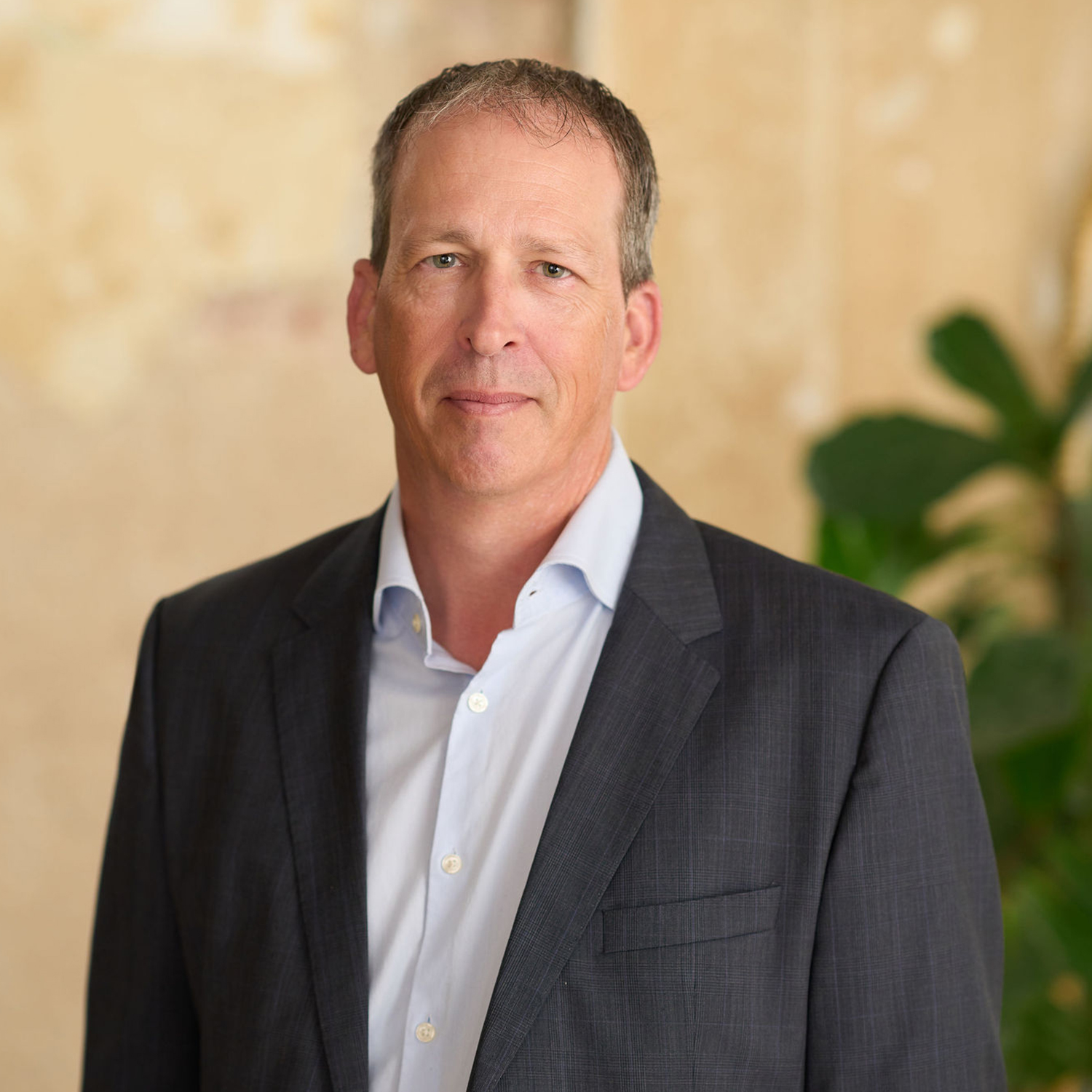
Eric Clark
Relentless Ally
Charting a New Course
Strong leadership is vital to expansion. When looking to break into new markets, strong teams are foundational for success. In the Mid-Atlantic, Eric Clark and a dynamic group of operations experts lead the way through their shared values of collaboration, empathy and a relentless dedication to the communities they serve.
In and around Central Virginia, Eric supports active projects by assisting our project teams in overcoming challenges, securing the resources they need or connecting with potential clients to identify new opportunities. Eric is a Relentless Ally committed to supporting operations teams as they provide essential buildings for rapidly growing communities.
Expanding Horizons
Eric and his teammates are expanding Balfour Beatty’s operations into the Richmond and Hampton Roads communities of Virginia. Although the team has been operating in the area for many years, they recently set their sights on putting down roots and getting more established.
“We’ve been here for quite some time, and we’ve built a great core group of people,” says Eric. “We saw an opportunity to grow our market presence, and we’re thrilled to begin this next chapter.”
The Richmond and Hampton Roads team plans to expand their presence in the federal, institutional and higher education markets, building upon the Mid-Atlantic’s impressive 93-year history in the region. The team has hit the ground running and is actively engaged in several significant projects, partnering with clients like the College of William and Mary and their repeat-client, the US Army Corps of Engineers.
“This is an opportunity to serve the central Virginia community, using our established local expertise to support the region’s growth and development,” says Eric. “Our commitment to excellence and the relationships we’ve built in the community have laid a strong foundation; we’re excited to deliver exceptional results for our clients and communities.”
Returning the Favor
Eric is no stranger to working in the field. He began at Balfour Beatty after graduating from Virginia Tech in 1998, joining the company as a project engineer. As the years progressed, he has risen through the ranks and experienced many parts of the business in the process.
The journey of Eric’s career gives him insight into the unique challenges his teammates experience at every level of the business. Now, he’s dedicated to living out our people-first culture and supporting the next generation.
“I had so many opportunities from my leaders throughout the years to develop in my career,” says Eric. “Now, I’m always looking for ways to develop others and provide them opportunities to get to the next level in their careers.”
For Eric, the value of mentoring cannot be overstated. Not only does it grow a network of exceptional construction leaders, but it also establishes a culture in which personal connections, teamwork and collaboration are paramount to success.
“Creating collaborative environments allows our teams to excel,” says Eric. “That collaboration leads to successfully navigating project challenges and accelerated schedules, ultimately ensuring that we can deliver excellent projects that meet our clients’ unique needs.”
Coming Full Circle
During his days as an assistant project manager, Eric was assigned to the National Museum of the Marine Corps, primarily supervising field crews during the fit-out phase of the project. The 120,000-square-foot facility was nearing completion when Eric joined the team, working the night shift and finalizing the lighting in the main gallery.
Over ten years later, Eric found himself once again at the museum, this time as a project executive. For the phase 2 expansion project, the team more than doubled the space, adding new exhibit galleries, a large screen theater and a student education center.
“It was a really full-circle project for me,” explains Eric. “I was engaged in the initial project from a young age and felt like I was just finding my way in the industry. Being able to come back so many years later and lead the team that put the expansion on has been a highlight of my career.”
The museum has received extensive recognition, with the original project earning more than a dozen recognitions and the expansion project earning recognitions from Associated Builders and Contractors (ABC) of Metropolitan Washington and Virginia and NAIOP Northern Virginia. It is one of Balfour Beatty’s signature projects in the Mid-Atlantic, and a testament to our team’s emphasis on collaboration and commitment to bringing our clients’ visions to life.
Stepping Fearlessly in the Future
As the team charts a new course in Central Virginia, careful planning and preparation set the foundation for building to last. New challenges and unexpected obstacles are sure to come, but with a strong, collaborative culture as their guidepost, Eric and his teammates are ready to meet them head-on.
Read More
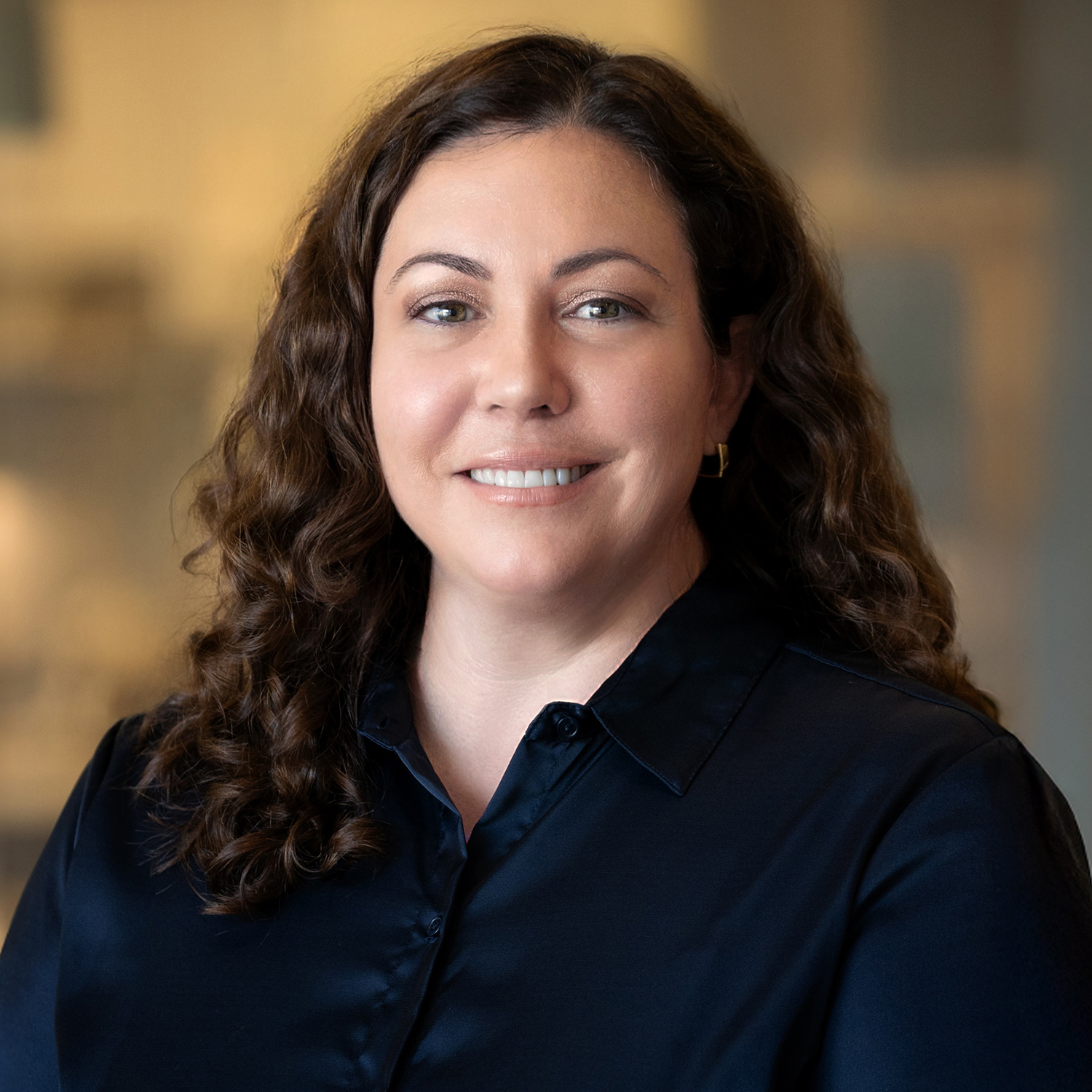
Allison Black
Relentless Ally
Passionate About Partnership
When you cut your professional teeth in the restaurant industry at the age of 16, you learn a thing or two about how to anticipate people’s needs for seamless service and personal connection.
That’s exactly where new Arizona Business Development Director Allison Black started, and her career in the more than 21 years since has encompassed a grand tour of the hospitality and architecture, engineering and construction (AEC) industries. At each step along the way, Allison has refined and refocused her commitment to fostering productive connections between teams, people and projects.
In her past professional experiences, Allison’s work has naturally brought her close to Balfour Beatty’s orbit on multiple occasions – at one point, she even attended an open house event at our Scottsdale, Arizona offices in 2018, where she met with and learned from local leadership. After her time with global design firm FITCH (a WPP Company) and later Henderson Engineers, a national building systems firm, Allison heeded the call to collect the final stamp in her AEC passport.
“I couldn’t be prouder to join a team that is so trusted and respected, both in Arizona and nationally,” Allison says. “As a lifelong communicator, strategic marketer and business development professional, I’m excited to help our teams and clients connect the dots and identify new opportunities for growth, partnership and successful projects.”
Balfour Beatty’s Arizona operations have established a well-earned reputation as the contractor of choice for large-scale hospitality projects, including the ongoing Grand Hyatt Scottsdale Resort at Gainey Ranch and past work like Mountain Shadows Resort and The Fairmont Scottsdale. While Balfour Beatty’s hospitality market leadership continues building on this momentum, Allison also sees Arizona as a strategic growth market for many other sectors and is committed to finding new avenues for opportunity.
“Like in other parts of the country, many Arizona developers are diversifying portfolios and adjusting to our status as a hub of commercial mixed-use developments, retail and entertainment destinations and other rapid growth markets like data centers,” Allison adds. “Balfour Beatty is well-positioned to take on these growth areas and more.”
Allison is originally from Northern California east of the Bay Area, but became an Arizona State University Sun Devil and received her bachelor’s degree in communications and business. Throughout her career, she has participated in multiple professional organizations and committees, including the International Council of Shopping Centers (ICSC), the Urban Land Institute’s Women’s Leadership Initiative (ULI-WLI) and the Arizona Association of Economic Development (AAED).
“Allison is a fantastic addition to our team in Arizona,” says Vice President Jay McQuarie. “She has an innate sense of client relationship-building and advocacy and a unique drive to see our clients connected to the teams and project solutions that best suit their needs.”
Read More
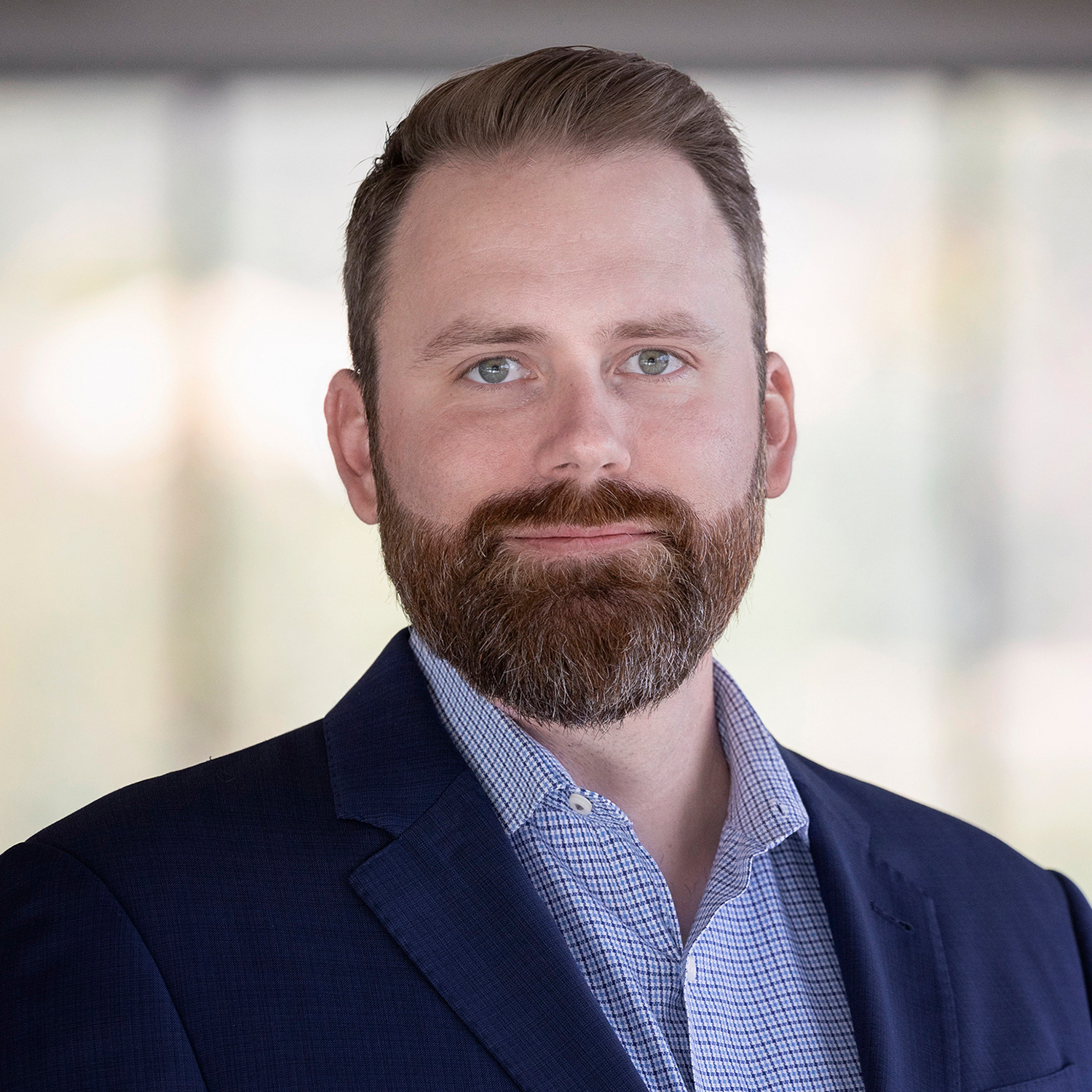
Landon McQuestion
Relentless Ally
Leading an Estimating Dream Team
Vice President of Preconstruction Landon McQuestion has approached his career as an estimator with a serial inability to sit still. As estimators constantly chase a moving matrix of prices and timetables, so too has Landon relentlessly pursued opportunities to push the boundaries of tech-enhanced preconstruction and build teams that share his and Balfour Beatty’s client-first values and lean leadership.
Today, Landon leads a team that, though based in California, is actively leaving an indelible mark on our preconstruction practices nationwide. Landon is also Balfour Beatty’s foremost expert on DESTINI Estimator and spearheaded its implementation over eight years ago.
While Landon and his team continue to test new and exciting AI-powered preconstruction tools, they still churn out more than 200 estimates per year, constantly driving down risk for our clients and trade partners.
From Trade Partnerships to Estimating Prowess
Landon attributes much of his estimating success to his roots in the trades, where he first worked as a metal stud framer and experienced the many ways that inaccurate estimating can result in cost escalations or delays that directly impact trade partners. After transitioning to the world of estimating, he brought this ground-level knowledge of the jobsite to bear.
It can be easy for estimators without that experience to overlook the granularity of a jobsite’s day-to-day activities and materials – how many tubes of caulk will be needed on a project? How many screws? How many cans of paint?
“At Balfour Beatty, we’ve created a culture where we expect that kind of precision as a higher degree of service to our clients,” Landon says. “Most of our estimators also come from the subcontracting world, so they understand the value of minute detail.”
While pursuing ever more accurate estimates is a clear benefit to our client, Landon’s and others’ trade backgrounds also ensure that our preconstruction teams have a clear window into our trade partners’ interests in achieving mutually beneficial goals.
“Large contractors can fall into a mindset that small preconstruction inaccuracies ‘come out in the wash,’ but we know better,” Landon adds. “Not only does that mentality betray our mission to deliver lean project solutions for our clients, but it lets down our trade partners for whom small changes can have outsized impacts.”
Embracing DESTINI
Collaboration – within, with clients and with design and trade partners – is at the core of Balfour Beatty’s behaviors as a company. When Landon first encountered the possibility of an even more collaborative and virtually accessible preconstruction environment via DESTINI Estimator, he seized the opportunity with the full support of company leadership.
At a base level, DESTINI provides a powerful tool for parametric estimating, able to extrapolate future estimates based on Balfour Beatty’s ever-expanding database of current and historical costs. In a time of persistent market volatility, owners increasingly rely on “napkin sketch” estimates during the earliest phases of project planning.
By implementing DESTINI Estimator, Balfour Beatty makes “napkin sketch” calculations as reliable as possible, and the following more concrete estimates are faster and more collaborative than ever.
“Many of our projects follow a collaborative alternative delivery contracting model like design-build or CM at-Risk, which already universally enhances collaboration between our team, the client and our design partner,” Landon says. “Using DESTINI combined with powerful 3D modeling tools, our preconstruction team and design partners can generate hypothetical sub-estimates in minutes, testing value engineering decisions and their cost implications in real time.”
What was once handled in a series of tedious back-and-forth emails (potentially losing the accuracy of cost data in the process) can now be accomplished instantly, accessible to all and accurate to the minute. Beyond just enhanced accuracy, the time savings significantly accelerates preconstruction and thus a client’s prospective speed to market.
Building on Success
Even after successfully implementing and improving upon DESTINI Estimator’s powerful advantages, Landon and his team have continued to explore new enhancements to the technology.
Under Landon’s leadership and out of commitment to Balfour Beatty’s mission, Senior Estimator Jorge Vargas has recently made DESTINI’s already collaborative environment even more user-friendly and accountable by creating a data-rich environment of trend management with software from Join. With the tool, clients, designers and our estimators can easily prioritize the most financially consequential value engineering options, comparing even minor design changes using DESTINI’s reliable cost predictions.
That data is largely managed by Estimator Hans Seggelke, and the entire process is overseen by Chief Estimator Neil Reilly, all while Director of Design Management Kristen Tuerk utilizes her architecture background to help clients identify the most lean and cost-effective design choices for any project.
While Landon is quick to divert attention away from himself and toward the dynamic preconstruction team he’s assembled, they’re all united by the same client-first values. Whether building schools, emergency operations centers or world-class aviation facilities, preconstruction professionals like Landon and the rest of our California team have the technical knowledge, collaborative mindset and willingness to try new and powerful tools necessary to create success.
Read More
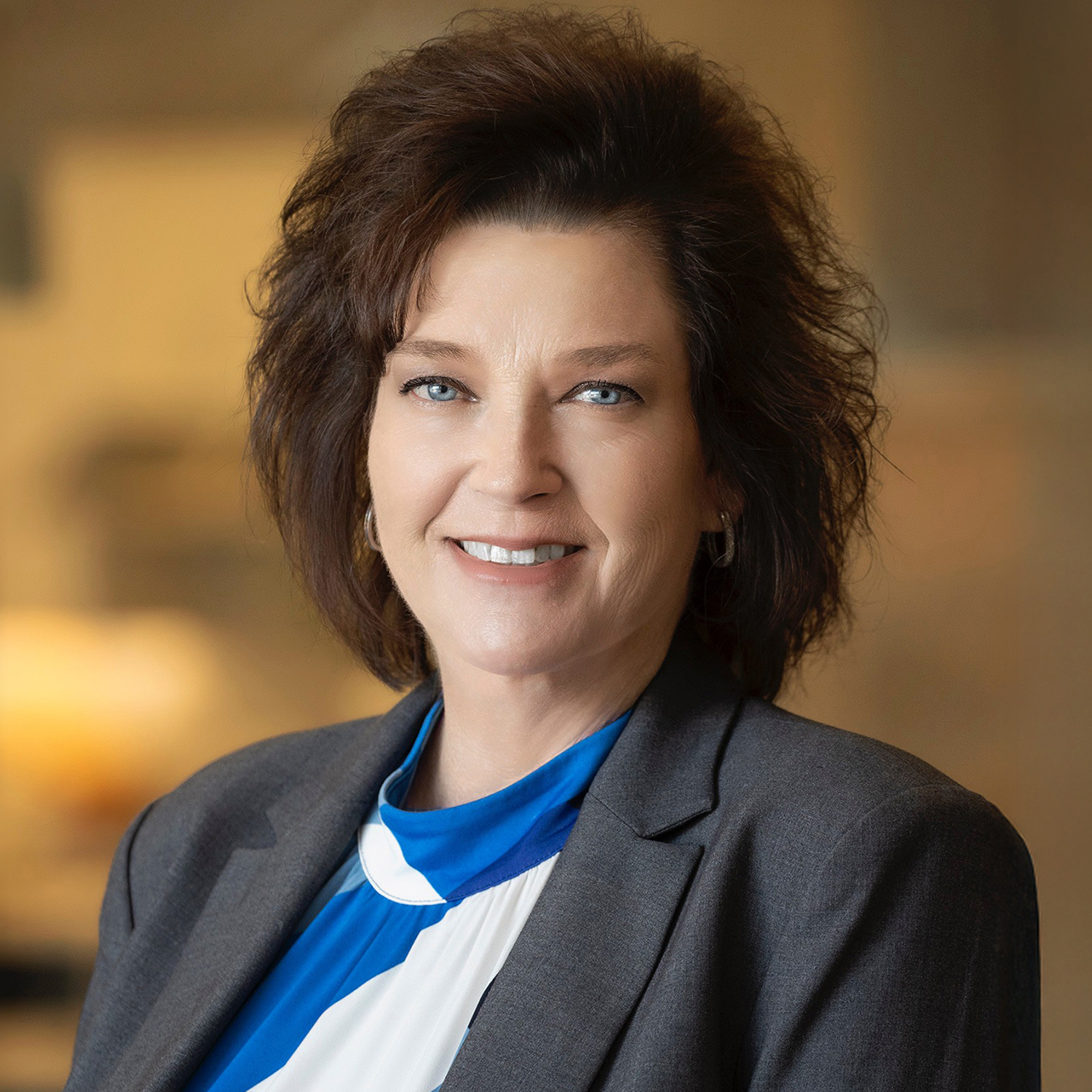
Jennifer Rhoads
Relentless Ally
An Unwavering Anchor for Arizona
The remarkable story of Jennifer’s life and career isn’t one without its setbacks or sacrifices. But it’s equally filled with moments of great serendipity that, coupled with her ‘never-say-no’ work ethic, have molded Jennifer into a leader who is respected for her operational excellence, trusted for her authenticity and admired for her philanthropy.
As the daughter of a concrete superintendent who grew up toting reels of blueprints around jobsites, it was only natural to set her sights on the AEC Industry. She began her career at the noted architecture firm, Ruhnau Clarke & Associates. Jennifer’s destiny soon came calling when a superintendent from Douglas E. Barnhart Inc. recruited her to join their ranks, and she jumped at the chance.
In the decade thereafter, Jennifer received successive promotions in leadership and built an impressive resume. But in the wake of a significant personal event, Jennifer made the difficult decision to move back to her home state of Arizona where Barnhart did not maintain a presence. Although Jennifer soon found work with another contractor, she deeply missed the Barnhart team and culture and longed to return.
That all changed in an unexpected twist of fate at the most unexpected of places: the 2015 Arizona Bike Week. To her great surprise, Jennifer spotted Balfour Beatty’s signature blue signage at a WestWorld project. In the years following Jennifer’s departure, Balfour Beatty significantly expanded its West coast presence, acquiring not only Barnhart but also Howard S. Wright’s Northwest and Arizona operations.
Jennifer immediately called Brian Cahill - then president of Barnhart - with a simple request: “I want to come home.”
Builder, Doer, Leader
And back home Jennifer came. Since that time, she has been instrumental in growing our Arizona operations and embracing the team’s “builder-doer” model.
Whether she’s helping bring a large-scale hospitality project out of the ground, executing a fast-track special project for one of her many valued financial clients, pitching in on an estimate or leading business acquisition initiatives, no task is too big or small for Jennifer to raise her hand. She’s even stepped up in a mentoring capacity to lead the Arizona chapter of Balfour Beatty’s Connecting Women employee affinity group and serves as an Ambassador for our My Contribution enterprise-wide program for employee-led business change.
“I’m a roll up your sleeves, get it done, jack of all trades,” affirms Jennifer. “It’s in my blood to be juggling five million things at once.”
That grit and determination served Jennifer well in 2020 when she faced a serious health challenge. As those who know her tenacity could have predicted, Jennifer didn’t just bounce back from this trial – she leveraged it to find a new and meaningful purpose.
When Jennifer returned, she requested the opportunity to take on leadership of the Arizona team’s special projects operations. She instinctively recognized the market’s incredible growth potential and was attracted to the quick-turn nature of the work. Vice President Jay McQuarie didn’t hesitate to entrust her with the role.
A Servant Leader for Special Projects
Through her servant-leader approach, Jennifer has successfully nurtured and grown relationships with existing special projects clients such as Vanguard while bringing new clients into the fold and expanding Balfour Beatty’s market share. Today, she manages an impressive portfolio encompassing several national clients.
Although servant leadership can entail many different characteristics, to Jennifer, the term can be boiled down to a central trait: commitment. Whether it’s a work order to patch paint or the renovation of an entire trading floor, Jennifer is wholly committed to the success of her clients, projects and partners. She has even created a highly customized SOP for each client that communicates their unique needs and delivers on their goals with every project.
As an enduring sentiment of her commitment, Jennifer concludes every OAC meeting with a personal tagline: “Morning, noon or night, call me. I’m here for you.”
Building Bridges, Molding Minds
Jennifer certainly answers the call for her clients. In an even broader sense, she has answered the call for her community - both locally and globally. She not only leads Balfour Beatty’s longstanding partnership with non-profit Arizona Angels for Children but also served as a member of Balfour Beatty’s 2018 Bridges to Prosperity team which built a 430-foot footbridge that provides safe, year-round access for the Espiritu Santo community near Cochabamba, Bolivia.
“When I learned about the opportunity to use our expert engineering and construction skills to serve communities in need, I knew it was a calling I was uniquely suited to answer,” Jennifer says. “Providing opportunities for others has always been a very important value for me.”
In the years following, Jennifer has continued to support Balfour Beatty’s Bridge to Prosperity mission in a fundraising leadership capacity.
Jennifer is known amongst her Arizona teammates as “Momma Jen.” Her deep care is profoundly manifested in ways both great and small and in ways that can easily be described, and yet are somehow profoundly intangible to those in her sphere. With steadiness, strength and a servant’s spirit, Relentless Ally Jennifer Rhoads is an anchor for Arizona.
Read More
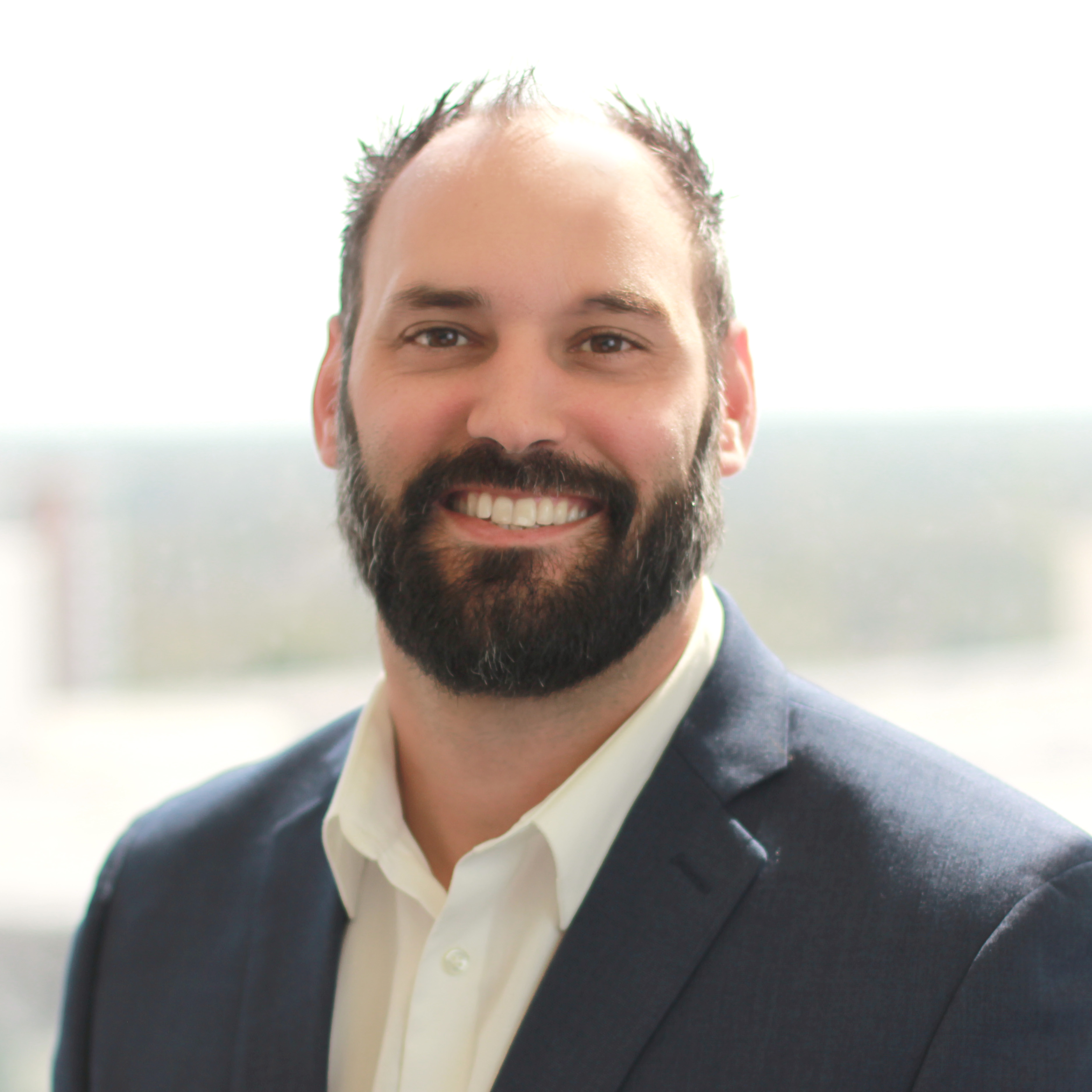
Jonathan Pearch
Relentless Ally
Building Relationships to Last
During his 16-year career with Balfour Beatty, Vice President Jonathan Pearch has helped build some of Florida’s largest and most complex projects. From the iconic, 263,000-square-foot Dr. Phillips Center for the Performing Arts to the 30,000-seat Florida Atlantic University (FAU) Stadium, the Hyatt Regency Orlando and more, Jonathan has developed a unique insight into the levels of collaboration projects of that mega projects require across diverse market sectors.
Perhaps that’s why Jonathan, who began his remarkable career with Balfour Beatty as a four-time intern, describes his journey in terms of the people he’s encountered along the way. From trade and design partners to his valued clients, Balfour Beatty teammates and members of the local AEC community, Jonathan knows first-hand that effective leadership is all about relationships. And Jonathan builds them to last.
When local leadership recognized an opportunity to expand and diversify our South Florida operations, they looked no further than Jonathan to grow the company’s pipeline in higher education and municipal markets among others. Although the elevation in leadership required Jonathan to re-locate his young family, he jumped at the chance, bringing with him the strong cultural and relational foundations he cultivated in Central Florida.
“I was fortunate to work on large project teams early in my career and observe the behaviors that helped everyone navigate the inevitable challenges that arise,” recalls Jonathan. “I strive to establish project cultures rooted in trust, transparency and accountability, because those become solutions-oriented teams.”
On the $36 million expansion and renovation of The Alfond Inn at Rollins, for example, the project team encountered an issue that could have completely derailed the schedule and budget, or at worst, even required a complete re-design.
While preparing to pour foundations on the hotel’s five-story, 81,000-square-foot addition, the team discovered grid alignment issues in the existing structure. With concrete teams mobilized, the clock was ticking to identify a solution.
While some contractors might have put the onus back on the client, this team proactively rolled up their sleeves and got to work under Jonathan’s leadership. As the team collaborated on a solution, Jonathan prioritized maintaining open and honest lines of communication with all partners regarding real-time or anticipated impacts.
Together, the team determined it was feasible to rotate the grid and partnered with the City of Winter Park on resulting setback and easement concerns. But the team didn’t simply solve the problem—they developed an innovative sequencing plan to recoup the time lost and ultimately finished the project on schedule.
“As the leader of the project, it is your job to establish absolute trust with the owner beginning day one,” asserts Jonathan. “That starts by understanding their values and goals and making them your own.” It’s a lesson he learned from his closest mentor at Balfour Beatty, Senior Vice President Brian Prebenda.
If Jonathan doesn’t immediately know the answer to one of his client’s challenges, or simply needs a thought partner to offer up a different perspective, he’s quick to tap the immense network he’s cultivated over the years, including peers at the Associated Builders and Contractors (ABC) Central Florida Chapter, where he has served on the Board of Directors. With a deep understanding that our success hinges upon the success of our trade partners, Jonathan extends that same collaborative spirit into the local craft community.
For Jonathan, no matter the size, scope or geography in which we’re executing work, our recipe for success is simple: putting people first + building trusted relationships with a shared focus on operational excellence = exceptional project outcomes.
It’s a recipe that has already yielded great success in South Florida, with recent wins from first-time client, Nova Southeastern University, on their $23.9 million Terry Dining Renovation and an $90 million Student Housing project with long-time client, Florida Atlantic University (FAU).
From his humble roots as an intern to leading an entire market, Jonathan Pearch embodies the DNA of a Relentless Ally and is a passionate steward of Balfour Beatty’s unwavering promise: we build to last.
Read More
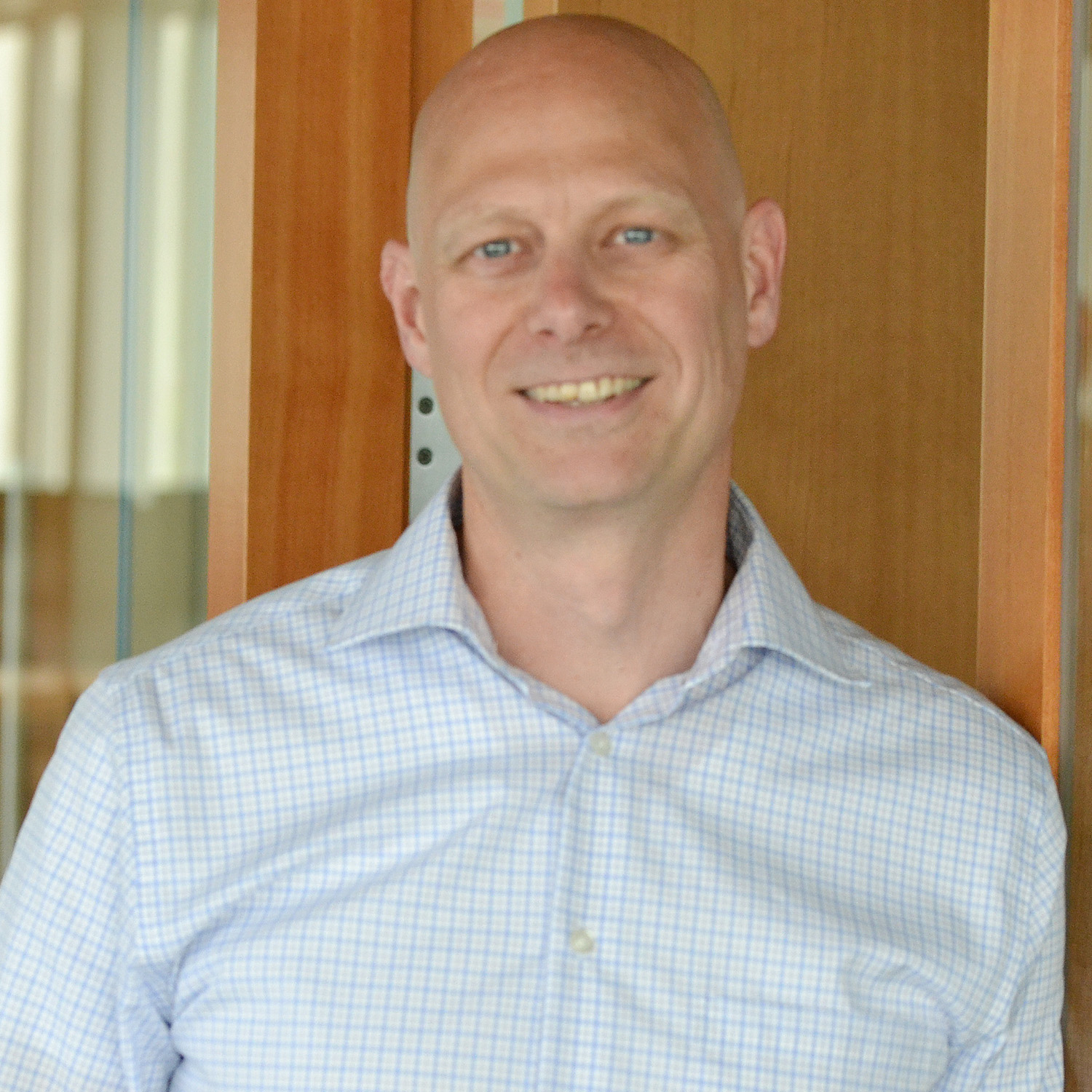
Jeff Longacre
Relentless Ally
Setting the Bar for Seattle Special Projects
Jeff Longacre knows a thing or two about consistency. Throughout his 32-year career, he’s worked for one company, in one market sector and remained committed to one overarching goal: delivering successful special projects – nearly 500 to be exact.
Behind that consistency is a man who wears many hats as the company’s vice president and special projects business unit leader in Seattle, Washington. From business development to estimating, scheduling, recruiting top talent and more, Jeff still enjoys every facet of special projects as much as his first day on the job. In fact, Jeff believes success in this fast-paced sector hinges squarely on a team’s adaptability and versatility.
They are qualities Jeff has in spades. Having worked his way through college as a residential carpenter, Jeff learned the industry from the inside out. He credits his time in the field with providing a practical perspective on project execution as well as a direct lens into clients’ deeply personal connection to the work.
“Swinging a hammer taught me how to be a better estimator and scheduler,” affirms Jeff. “Emotions can have a direct impact on the decisions clients make, whether it’s a home or office building. I learned how to build relationships based on trust and communicate effectively with my clients to understand their goals.”
Trust: The Secret Sauce to Special Projects
Upon graduation from the University of Washington with dual majors in architecture and construction management, Jeff began an internship with Howard S. Wright, a Balfour Beatty company (HSW). As Jeff explored HSW’s diverse markets, he quickly discerned the alignment between his unique background and the skillsets required for special projects. At the time, however, special projects weren’t exactly a young builder’s coveted career path.
“When I started out, you could say special projects was the red-headed stepchild of the industry. Most people who get into construction want to work on projects that change skylines. That’s not special projects.”
But Jeff intuitively sensed just how special—that special projects could truly be. From the opportunity to collaborate with project partners at a much earlier stage in one’s career to the increased ownership of project decisions and their impact on budget and schedule, special projects don’t just require our teammates to wear many hats. To deliver highly custom projects that move forward at lightning speed, they must wear those many hats exceedingly well.
“In special projects, you’re not separated from the client by an RFI,” says Jeff. “Superintendents are proposing value engineering solutions to clients face-to-face in the field, and project engineers can begin cultivating what we call ‘living room relationships’ with our clients at a very early age.”
It’s one of the primary messages which enables Jeff to successfully recruit new talent to join their thriving and full-service special projects team which also performs maintenance and warranty work.
Jeff believes it’s this highly collaborative and solutions-oriented approach that helps HSW build such trusted relationships with our special projects clients and partners across a vast array of market sectors and delivery methods. An added layer of trust is needed for projects within occupied facilities, when special projects teams must provide real-time and enhanced communication and coordination efforts to ensure Zero Harm.
The Door to More
Over the decades, clients have come to depend on Jeff’s guidance and that of his teammates, and the entire business has reaped the results. From a Confidential Online Global Retailer to leading banking institutions and even educational institutions including his alma mater, our Northwest operations enjoy a nearly 90% repeat client rate.
“A client is often willing to go out on a limb on a $50,000 job more than a $50 million job,” maintains Jeff. “Once a client starts understanding that they can rely on our guidance and that the guidance adds real value, you start to build trust which can often lead to repeat work or even major capital projects.”
To help attract the workers back to the office post-pandemic, commercial clients are increasingly seeking Jeff’s expertise on design and construction choices that embody their culture, values and identity. Under Jeff’s leadership, the team has built mock-ups and conducted pilot programs to help meet their clients’ goals for the modern workplace.
The Staying Power of Special Projects
Although Jeff has more than three decades of special projects experience under his toolbelt, he doesn’t plan on exploring other market sectors anytime soon. He loves the people, frenetic pace and even the unpredictability special projects can bring.
“I never know what I’ll be doing three or even six months from now,” says Jeff. “We’re always assembling new teams, we’re always estimating, we’re always scheduling. I’m not going anywhere. I’m having too much fun.”
Read More
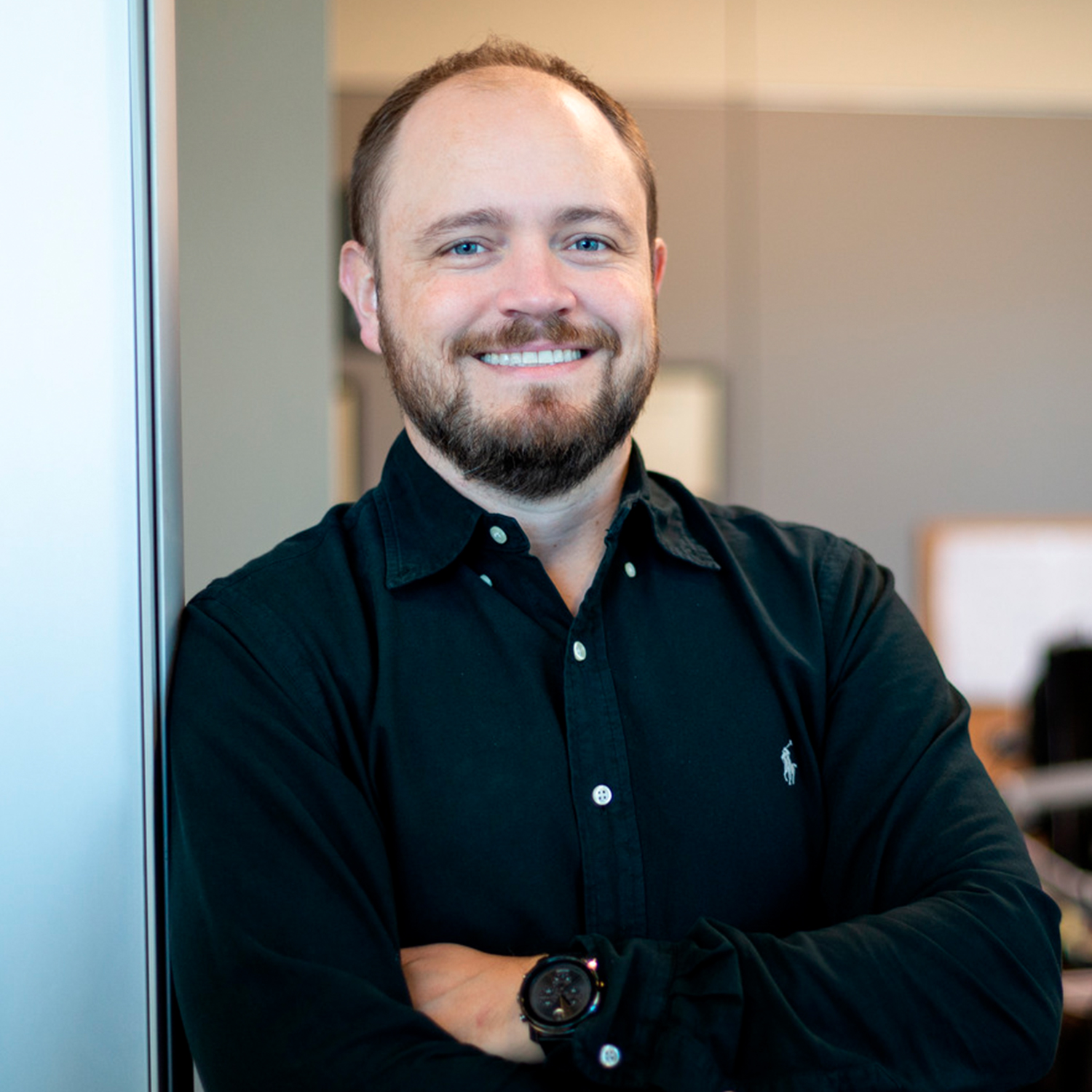
Daniel Shirkey
Relentless Ally
Daniel Shirkey: A People-First Champion of Lean Construction
Daniel Shirkey recalls the moment that changed the trajectory of his career like it was yesterday.
While en route to a concrete conference, Daniel’s professor of construction engineering at San Diego State University casually recommended he check out the Lean Construction Institute (LCI). At the time, the professor could not have possibly foreseen the extent to which Daniel would take this advice to heart—or how it would ultimately inspire and shape his philosophy on building.
Sixteen years later, Daniel has not only become a respected practitioner of lean, but he has also risen through the LCI volunteer ranks to become Chair of this year’s Congress. The annual event, widely esteemed within the AEC community, draws together hundreds of industry professionals and owners to gain new ideas and perspectives that advance their lean journeys. As Chair, Daniel leads multiple volunteer committees and collaborates with LCI staff on event planning, programming and logistics.
This high-profile leadership role is the latest in Daniel’s near decade of involvement with LCI, which includes positions as chair of the LCI San Diego Chapter Community of Practice (CoP) and membership in the Congress Content and Outreach Committee, where he has played an instrumental role in the abstract review process among other contributions.
Daniel has been a member of LCI since 2009 and attended a total of six Congresses over the years.
A People-First Lens on Lean Construction
Behind Daniel’s impressive legacy of service to LCI is a deep-seated belief that lean tools and methodologies have the power to transform the built industry as we know it. Although benefits of lean construction such as improved efficiency, better cost control and reduced risk are broadly known, Daniel believes it is lean’s most fundamental principle - respect for people - that has the greatest alignment with the tenets of Balfour Beatty’s people-first culture.
And in his role as Sr. Director of Technology & Operations Improvement in California, that’s precisely where Daniel sets his focus: people.
“When it comes to construction technology, yes, we have our client, but we also have our internal customer - our operations teammates, design team members and trade partners putting work in place,” says Daniel.
He makes it a priority to “go and see,” regularly visiting jobsites to discuss workflows, challenges and the value project teams derive from company tools and technology platforms and adapting workflows as necessary based on feedback.
Lean: It’s for Everyone
Daniel believes that his work with LCI and adoption of lean has made him a better technology advocate for the business and hopes to inspire others to explore the ways in which lean principles and tools can benefit them.
He is quick to dispel myths surrounding lean, including that it is difficult to learn and primarily only applicable on large-scale projects with Integrated Project Delivery (IPD) delivery models. On the contrary, Daniel believes that lean journeys can and should begin anywhere, at any time, on any project, for anyone.
“I’m passionate about the message that lean can be valuable to everyone,” says Daniel.
He encourages industry professionals to begin by familiarizing themselves with Gemba Walks and the Last Planner System®. The latter, developed by LCI founders Glenn Ballard and Greg Howell, is a comprehensive approach to project management that encourages greater collaboration between team members to produce more accurate plans and reliable schedules.
With the rise in collaborating contracting models such as design-build, which create greater runway for the deployment of lean tools such as Balfour Beatty’s propriety SmartStart® process, Daniel sees the appetite for lean only growing into the future as more owners experience its value. Just as importantly, the interest is rising among top industry talent who know first-hand the difference between working on a collaborative project or one plagued by inefficiencies.
The spark that Daniel’s professor ignited many years ago has grown to become an inspired and ever-evolving journey in his pursuit of the spirit of lean: continuous improvement. It is through the progressive vision, encouragement and commitment of lean leaders at Balfour Beatty like Daniel that our own lean journey is continuing to take root, drive innovative practices and deliver ever-greater value for our teams, partners and projects.
Interested in learning more about lean construction or ways you can get involved with the Lean Construction Institute (LCI)? Reach out to Daniel to learn more.
Read More
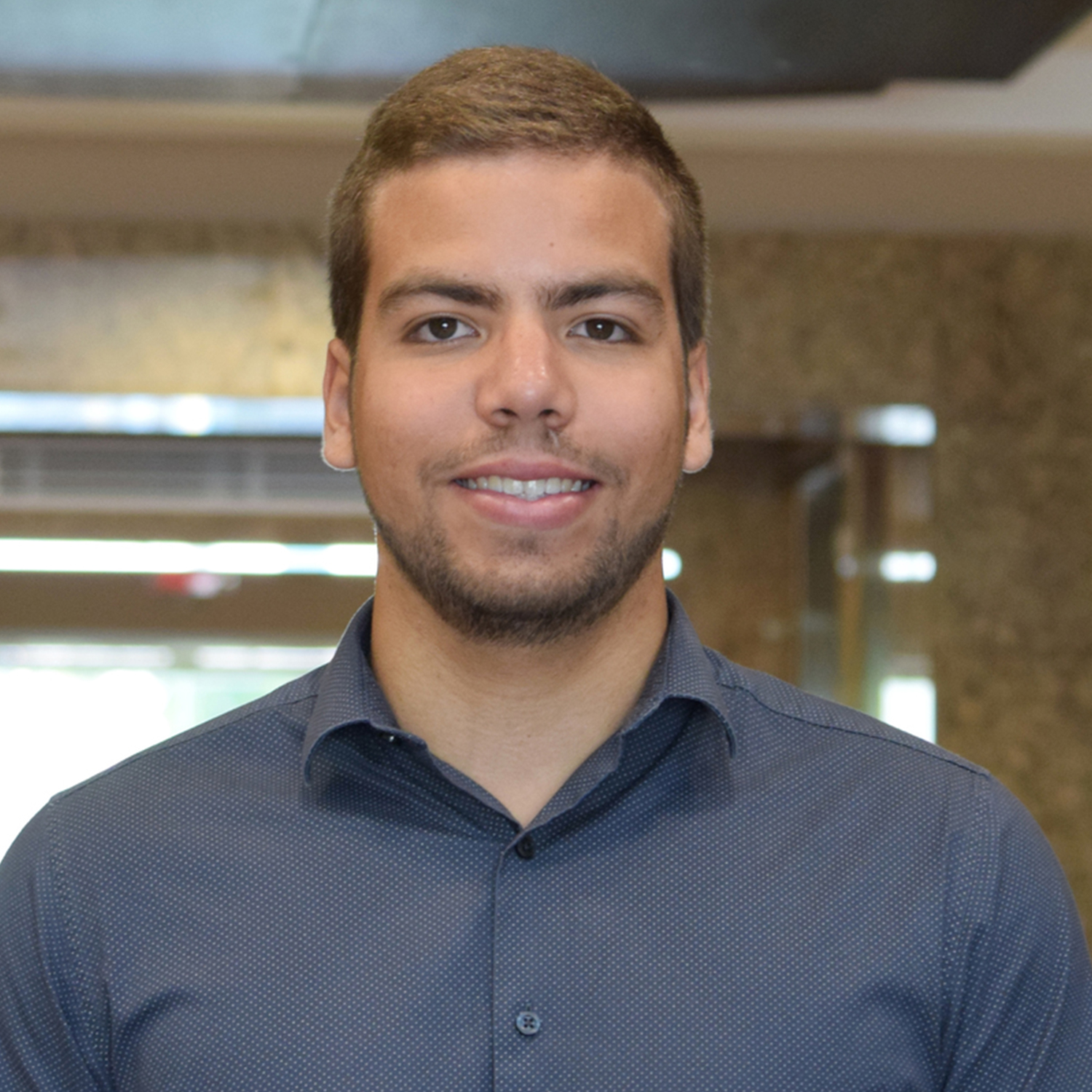
Mauro Rosales
Relentless Ally
La Familia es Todo
When Florida Project Manager Mauro Rosales first came to the U.S. in 2011, family meant everything. In a very real sense, family was all he had.
For the sake of his family’s safety and Mauro’s own career potential, his parents, Mauricio Rosales and Valbi Rangel, made the difficult decision to leave successful professional careers in Caracas, Venezuela and immigrate to the Doral suburb of Miami, Florida. The three spoke little to no English at the time but quickly began learning, navigating school and jobs to make ends meet along the way.
In the 13 years since, Mauro has taken his parents’ gifts – of opportunity, of unconditional support, of strong values – and run with them, creating a successful career as a construction professional. At every step, Mauro’s parents and remaining family in Venezuela have naturally remained his foundation, but one reinforced by his found and created families throughout school and into his career. And rather than focus his success and project management gifts inward, Mauro is now giving back as the team leader for Balfour Beatty’s 2024 Bridges to Prosperity team, leading the charge to build a footbridge in rural Rwanda that will connect communities to education, water and food year-round.
Leaving Everything Behind
Mauro was 16 when his family resettled in Doral. While still a young age, and young enough to quickly adapt to a new culture, new language and new way of life, 16 is still old enough that leaving everything behind was a profound and lasting loss. Nothing was as difficult as the family who stayed. Mauro’s great-grandmother Angela had lived with his family his entire life, but at the age of 101 was unable to follow them to Florida.
“All of my friends, all of my family, my entire life was back in Venezuela, and that was very difficult to leave behind,” Mauro recalls. “Still, Venezuela was and still is going through a very hard political and economic situation, and I know deep inside that it was the best decision to give my family better opportunities.”
While his immediate family was a crucial system during the initial challenges of relocation, Mauro says that a newfound family – fellow students at Ronald Reagan Doral Senior High School in a large community of Venezuelan immigrants – helped create a new sense of community and a shared vision for brighter futures.
“I found good people with stories similar to mine, and they’re still my best friends today,” Mauro says. “We supported each other through school, through jobs and through the entire process of adapting to a new place and culture.”
Connecting with Construction
Mauro worked as a restaurant waiter through the remainder of school, and when considering higher education and career paths after high school, family again shaped the direction of his life. Mauro intended to pursue a civil engineering degree and an architectural career, but his uncle Ernesto Rangel, an engineer back in Venezuela sagely advised a slight change of course: with Mauro’s natural relationship-building skills, a field career might suit him better. His uncle was absolutely right
“I continued studying engineering and design, but my uncle’s wisdom and my first internship made me reconsider,” Mauro recalls. “Working in the field, I still got to experience the aspects of design I most enjoyed, but I also got to have a better feel for the environment, build bridges between people and solutions and coordinate complex problems. I knew this was my path.”
Throughout university, Mauro’s family, both born and found, remained his touchstone. Both at Miami Dade College and later at the University of Florida, Mauro found large communities of Hispanic and Latin American students who understood and valued his roots and shared his drive to excel in construction.
His layers of support systems, including a roommate and classmate with a similar background, translated into a successful educational career and he soon landed his first construction job with Balfour Beatty, recruited as a project engineer and mentored by Project Executive Tom Stedem. Even better, his roommate joined him.
Mauro has since followed Tom to several successful Florida projects, created his own successes and now serves as an Assistant Project Manager on the Broward County Convention Center and Hotel project in Ft. Lauderdale, Florida.
Giving Back
When Mauro first heard of Balfour Beatty’s partnership with Bridges to Prosperity (B2P), he was instantly drawn to the mission and intended to apply for the team as soon as he was eligible. He didn’t, but regretted it immediately when the same roommate was selected for the 2022 B2P team. From that point, Mauro knew that his participation in B2P wasn’t a question of “if” but “when.”
“Bridges to Prosperity is a great opportunity for me to contribute to something real, lasting and life-changing for many families,” Mauro says. “I grew up relatively fortunate in Venezuela, but the conditions for rural Rwandans are not unlike situations I remember from back home, so I understand how this could impact the lives of people who need it most.”
As leader of our 2024 B2P team, Mauro is faced with a difficult task: coordinating a team of ten from every corner of Balfour Beatty’s US operations (yet another found family), spurring each teammate on to contribute to a successful and safe accelerated two-week bridge build. Despite the monumental logistical effort of the task at hand, Mauro’s focus, as ever, is on the people involved – both the families being served and the team traveling to serve.
“I feel strongly that B2P is not just an opportunity to provide critical infrastructure for a community in need, but also for our team to learn,” Mauro says. “My hope is that our team seizes the opportunity to open our eyes, minds and hearts, to understand the privileges we take for granted in the U.S. and to catch a glimpse of what really matters in a community with much less.”
Mauro and the B2P team depart for Rwanda on November 7. Balfour Beatty teammates, clients, trade partners and friends and family are invited to support their effort and to follow their journey before, during and after the bridge build.
La Familia es Todo
Throughout his education, career and now effort to selflessly give back, Mauro has never lost sight of the importance of family. Mauricio and Valbi still live in Doral, and though the two-hour round trip is substantial, he makes the drive as often as possible to visit and honor the family and community that provided for him, raised him and set him up to make a difference in the world from Florida all the way to Rwanda.
Read More
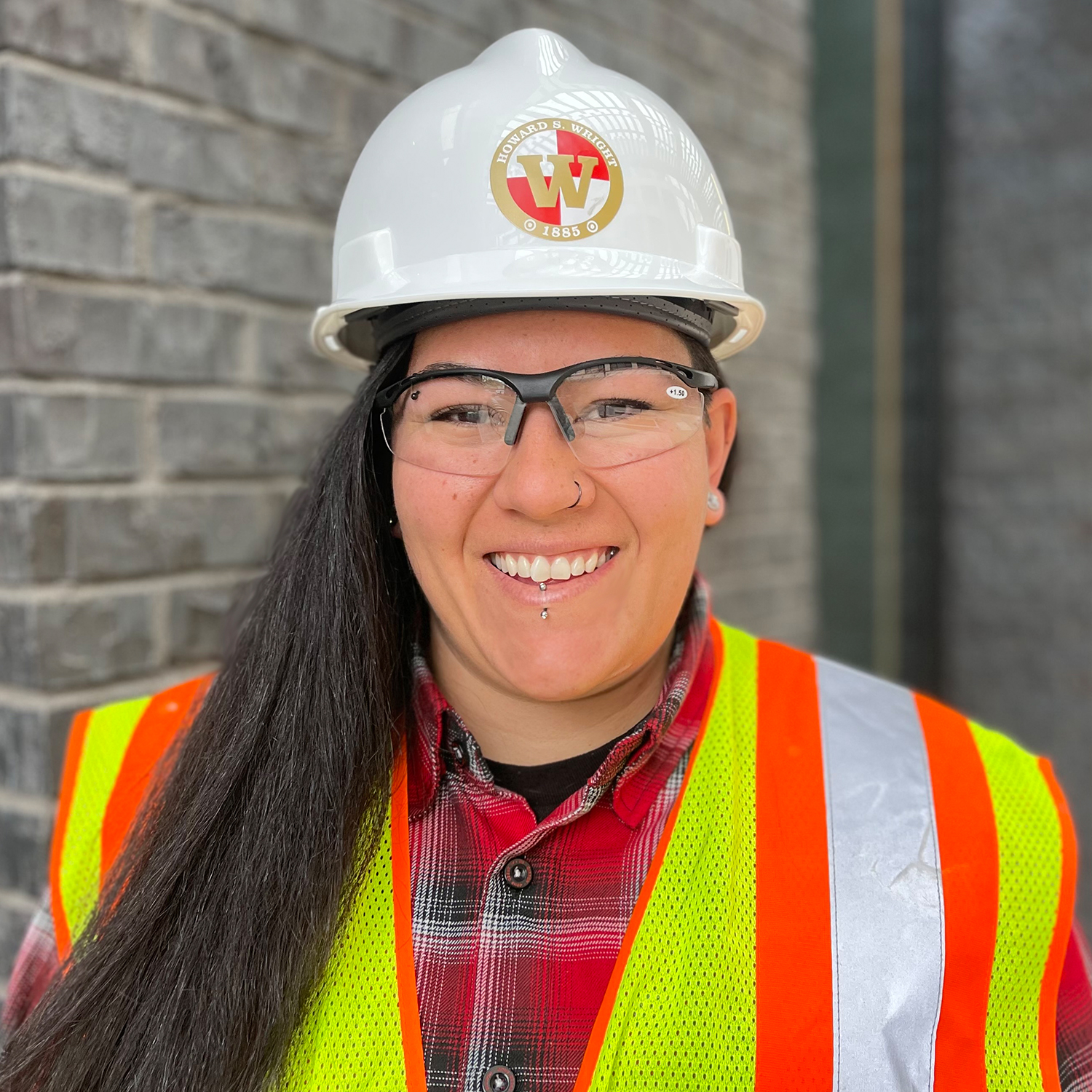
Carter Gulacy
Relentless Ally
Making Her Mark on Portland
When Superintendent Carter Gulacy isn’t working on impressive projects like The Springs, the Hoxton Hotel, the Portland Building, Broadway Tower or our very own Portland office, she is committed to guiding the next generation of construction professionals. How does she know the importance of mentorship? Because that’s what ignited her interest in construction.
Growing up working on the family ranch, Carter’s work ethic was no secret. She knew she wanted to pursue a career working with her hands and creating something, but she – like many teenagers – wasn’t sure what other opportunities existed.
When an acquaintance who worked in the construction industry mentioned they believed Carter had the skills to be successful, she kept his number for more than a year before finally reaching out. With his guidance and personal reference, Carter successfully jumpstarted her career.
Accomplished Field Leader
Today, no job is too big, too small or too challenging for Carter. Her impressive portfolio spans diverse market sectors from hospitality and commercial high-rises to mixed-use developments, special projects and beyond. This experience has honed Carter’s skillsets working on both core and shell structures and interiors, making her an even more well-rounded leader in the field.
In the process of helping transform Portland’s skyline, Carter has also become a cornerstone of our recruitment and retention efforts in the Northwest. Her passionate advocacy for the next generation of construction professionals, specifically tradespeople, has positively impacted our ability to attract and retain skilled workers, addressing a critical, industry-wide challenge.
“I began in the field and always want to be an outlet for who may be struggling on a job and not sure who to talk to about it,” she says.
Apprenticeship Advocacy
Carter is actively involved with two pre-apprenticeship programs offered by the Pacific Northwest Carpenters Institute (PNCI). Pre-apprenticeship programs help those starting out gain skills and experience as well as enhance their credentials and networks that are needed to begin a career.
The first, Portland Youth Builders, is a program that helps guide and educate young adults who are interested in working in the trades. During six- to eight-week programs, Carter (as well as other superintendents, project managers, project engineers and specialized tradespeople, such as masons and ironworkers) interview the young professionals and answer questions, explain roles within the industry and guide them to a field that suits their skillsets and passions.
The second is a Carpenters Pre-Apprenticeship Program for high school students interested in carpentry. This program has the same interview process, but provides students experience through summer internships, helping pave the way for their entry into the industry upon graduation.
Over the years, Carter has also mentored and supported numerous young professionals, all of whom have successfully secured employment within the local contractor community. Her commitment doesn't end with job placement; Carter maintains ongoing relationships with her mentees, continually leveraging her network to connect them with new opportunities in the industry.
Mentoring Close to Home
Turning her sights closer to home, Carter has also taken a leading role in strengthening the local Howard S. Wright “Foreman Four” training program. This initiative brings together laborers, carpenters and general foremen in monthly sessions to develop crucial skills such as communication, adaptability and leadership.
Carter is actively working to expand the program by incorporating a mentorship component, ensuring that foremen receive ongoing professional development support as they advance in their careers.
Carter's influence extends far beyond the projects she builds. Her dedication to sharing skills and supporting colleagues ensures that that influence will continue to shape our projects and our people for years to come.
Read More


